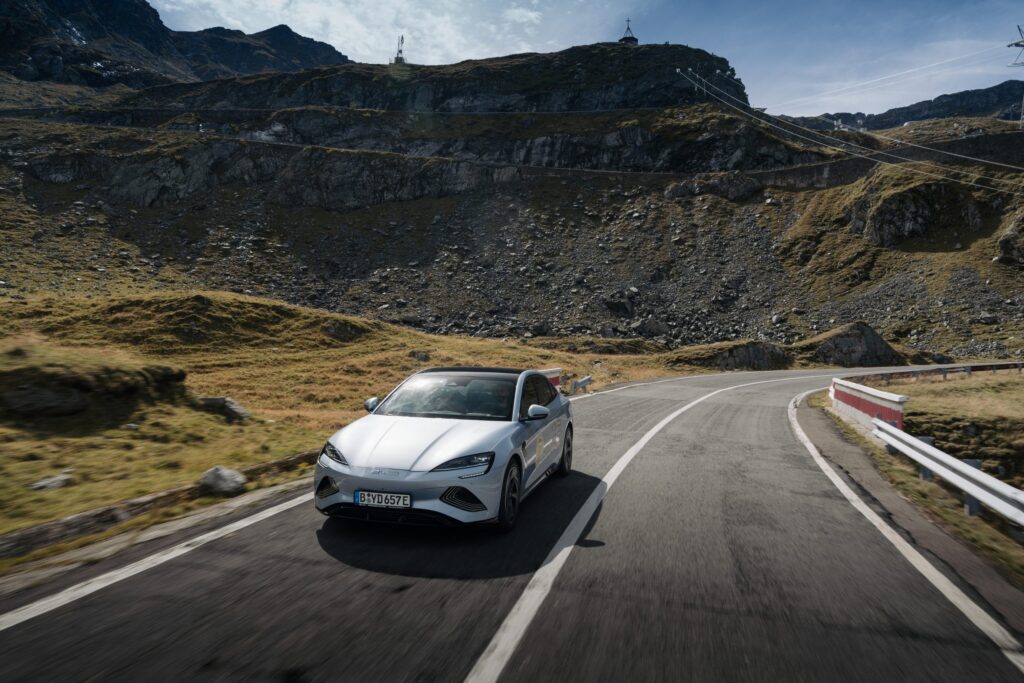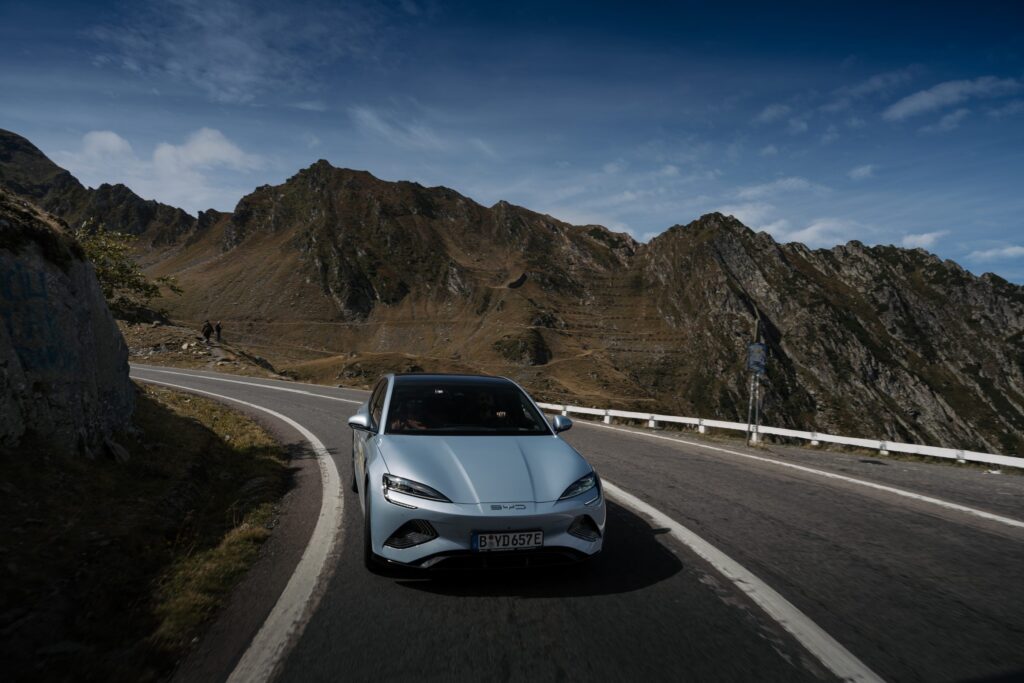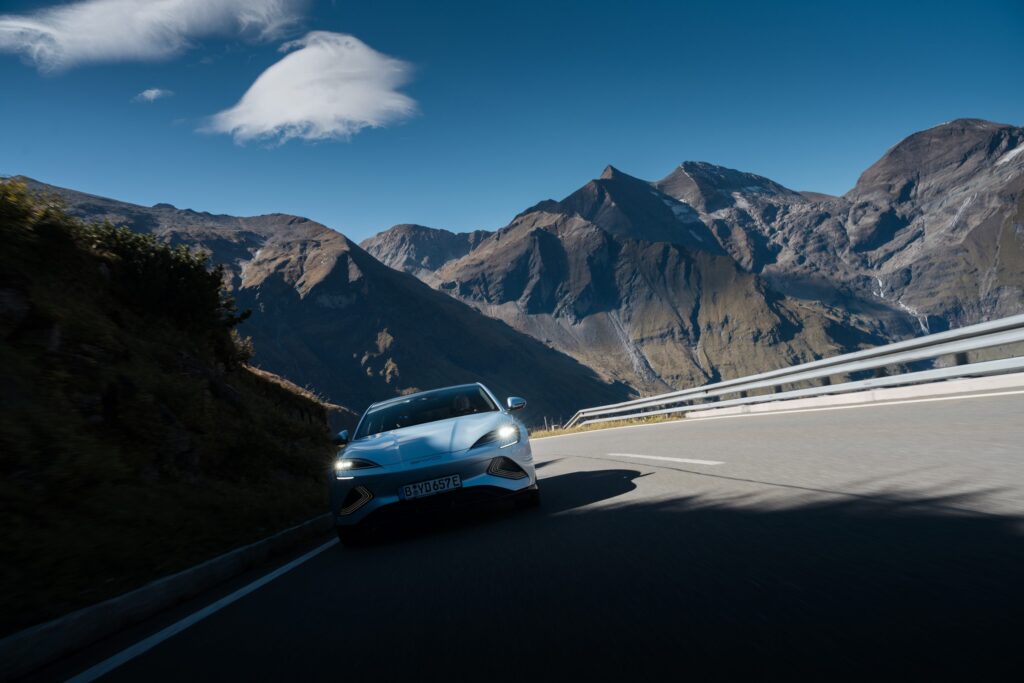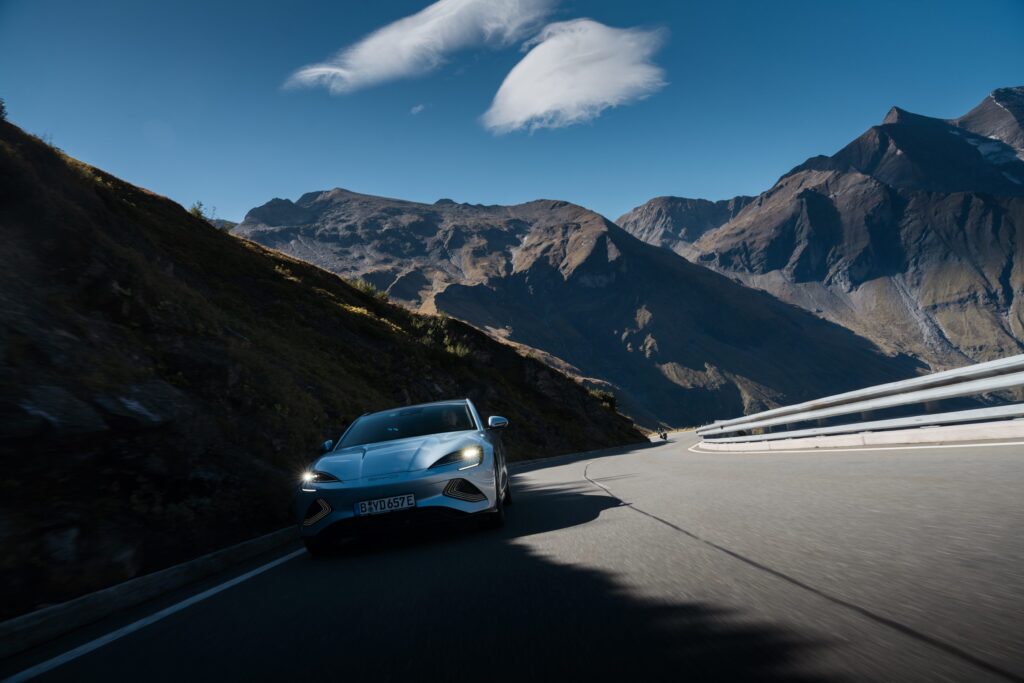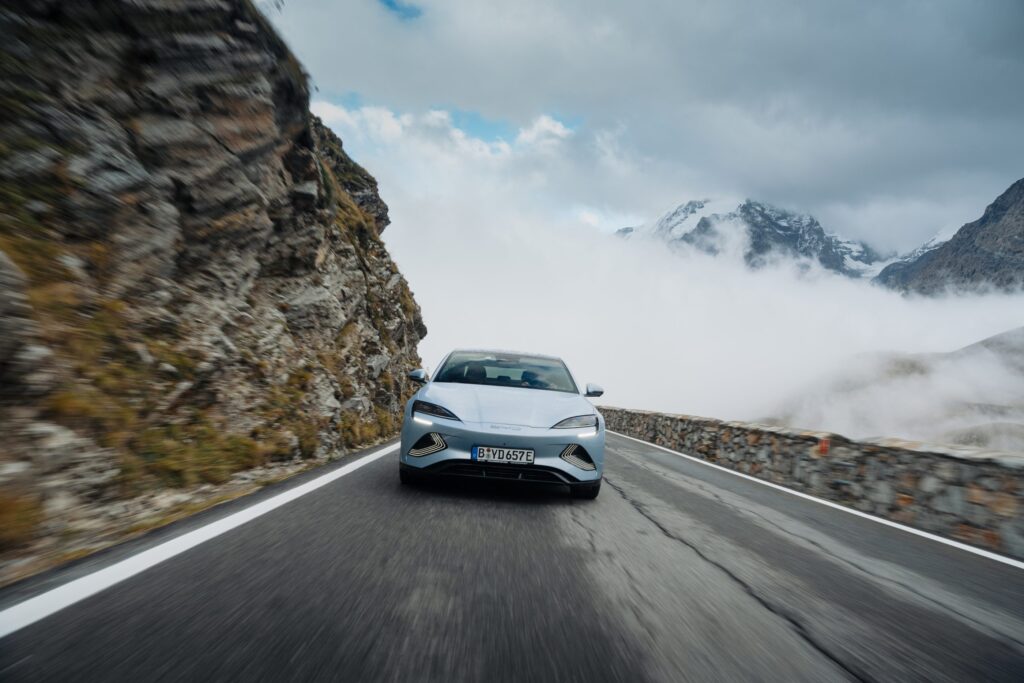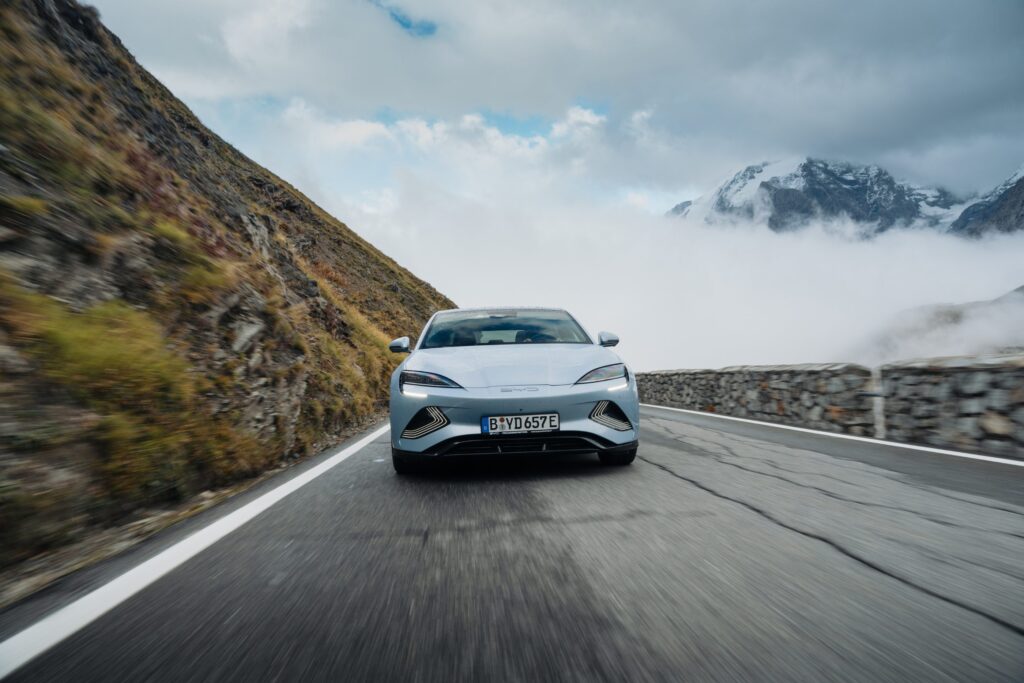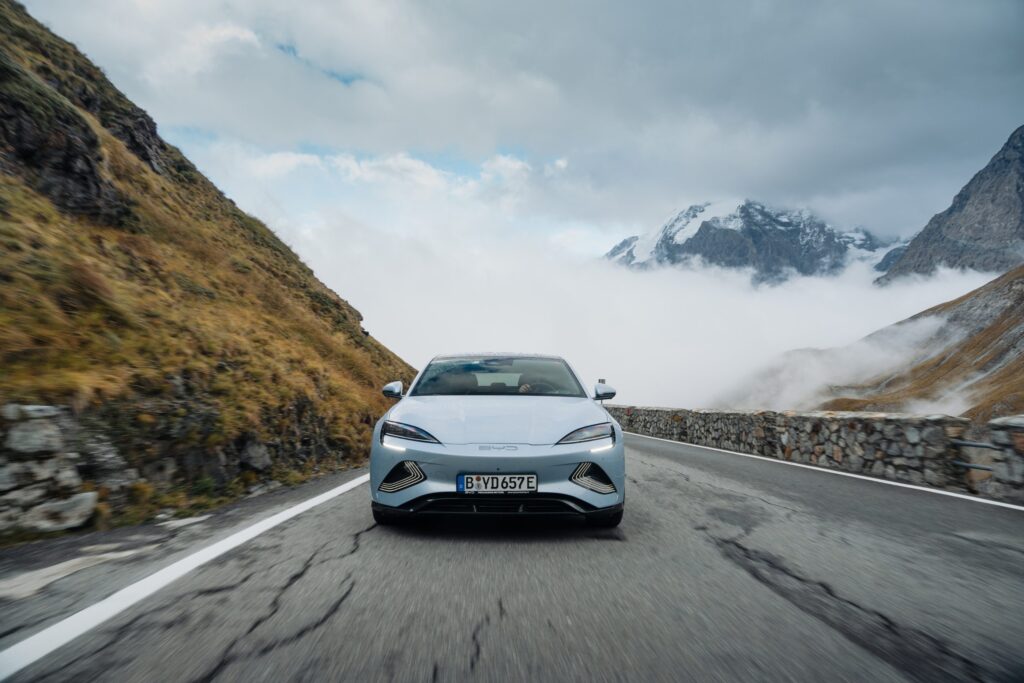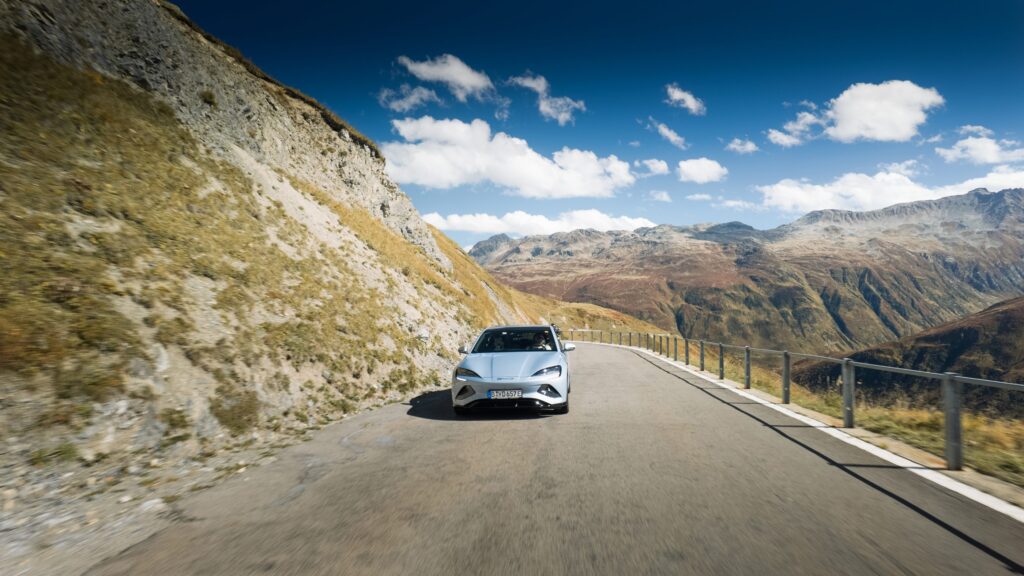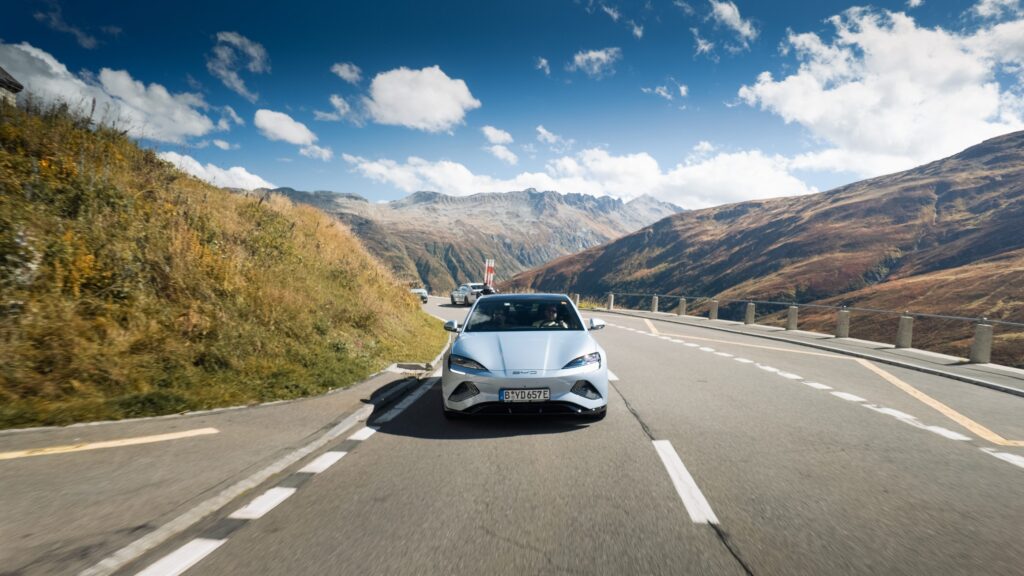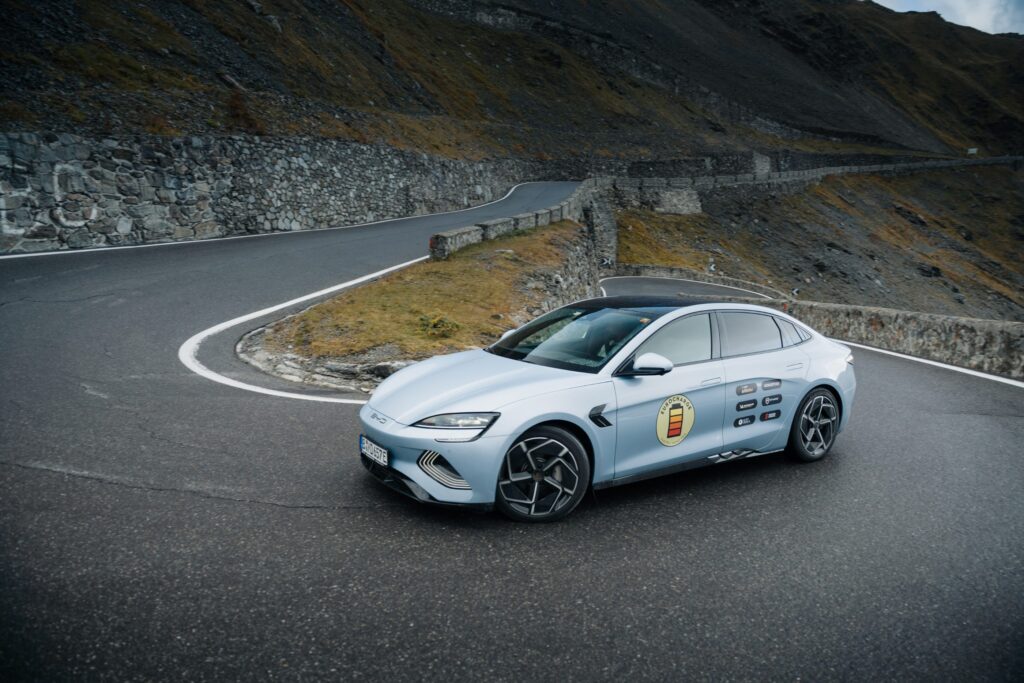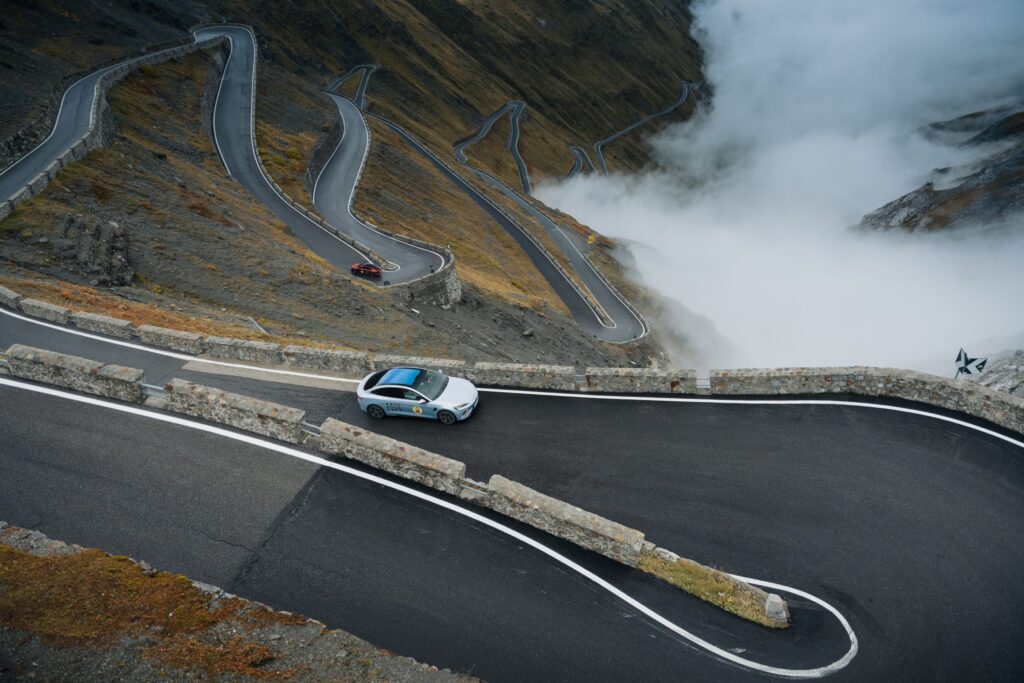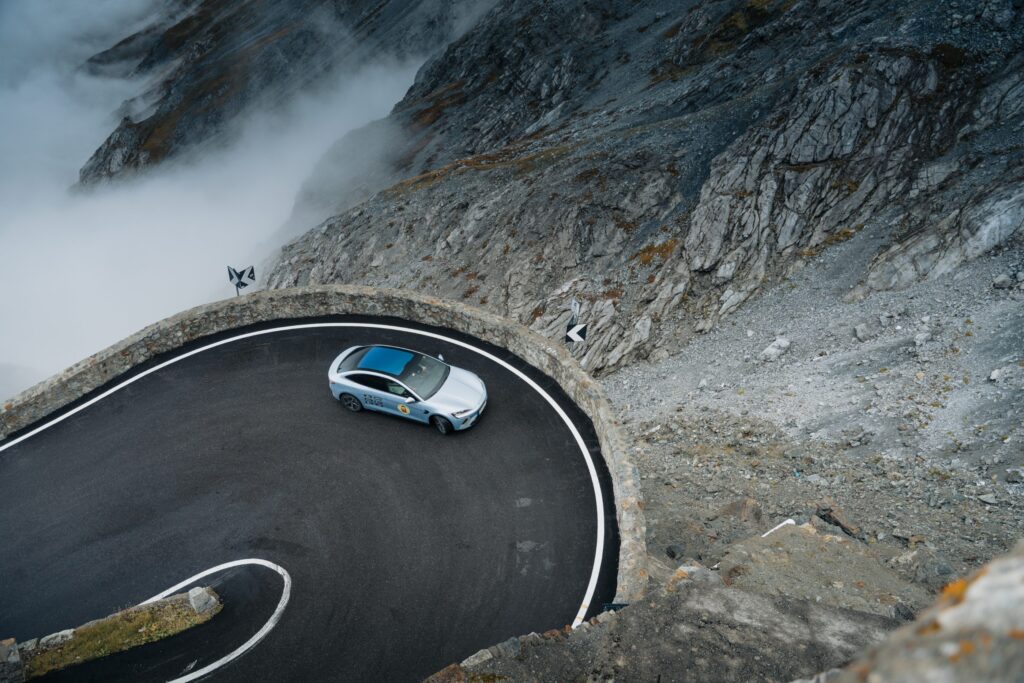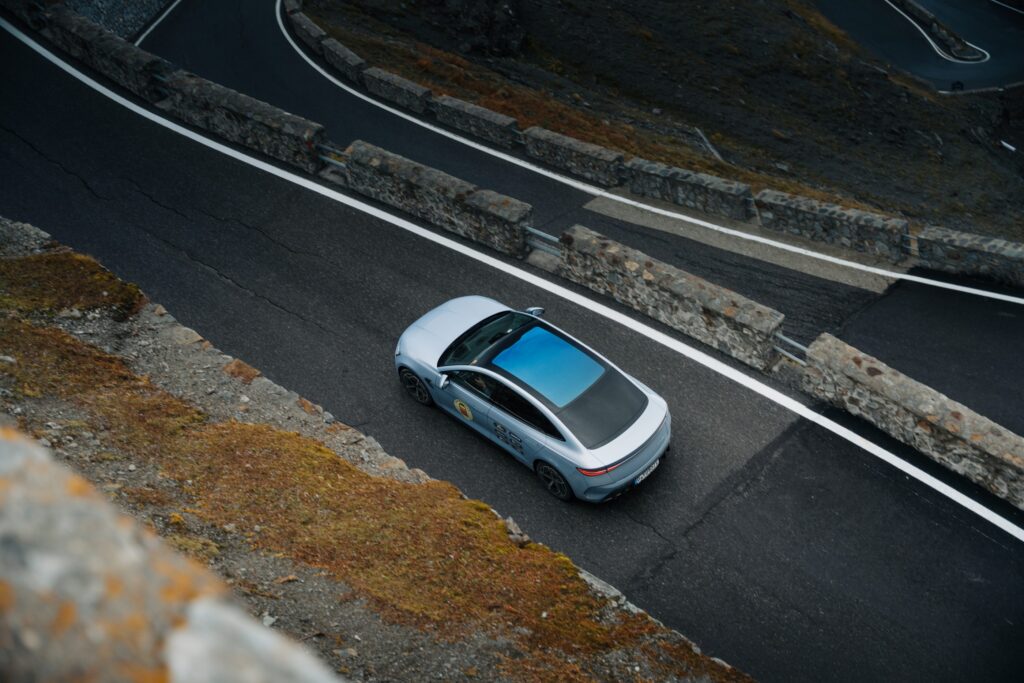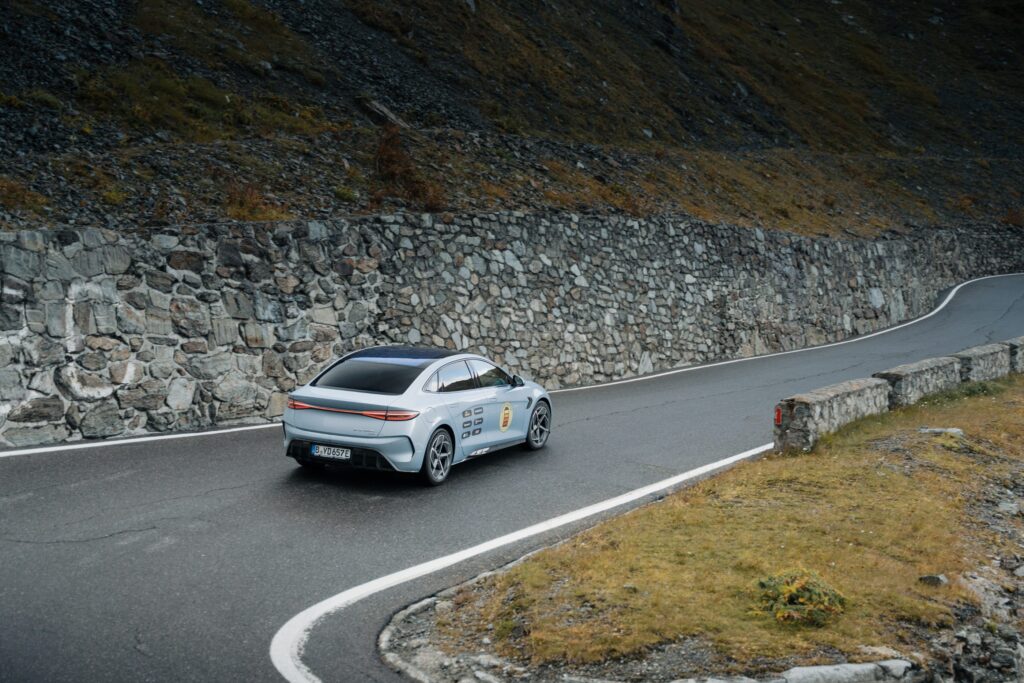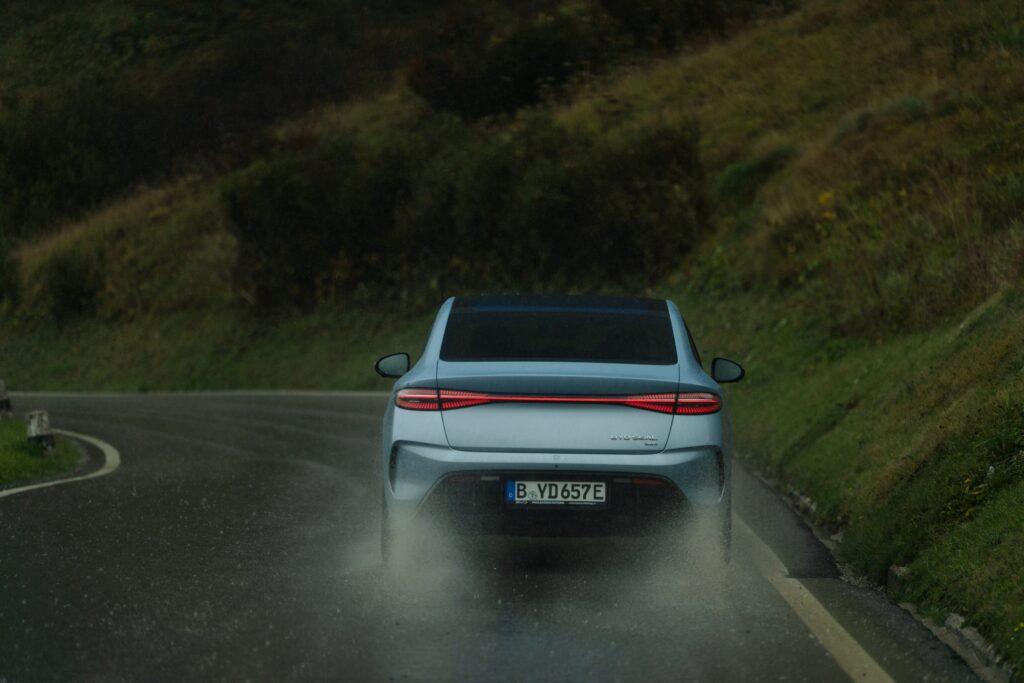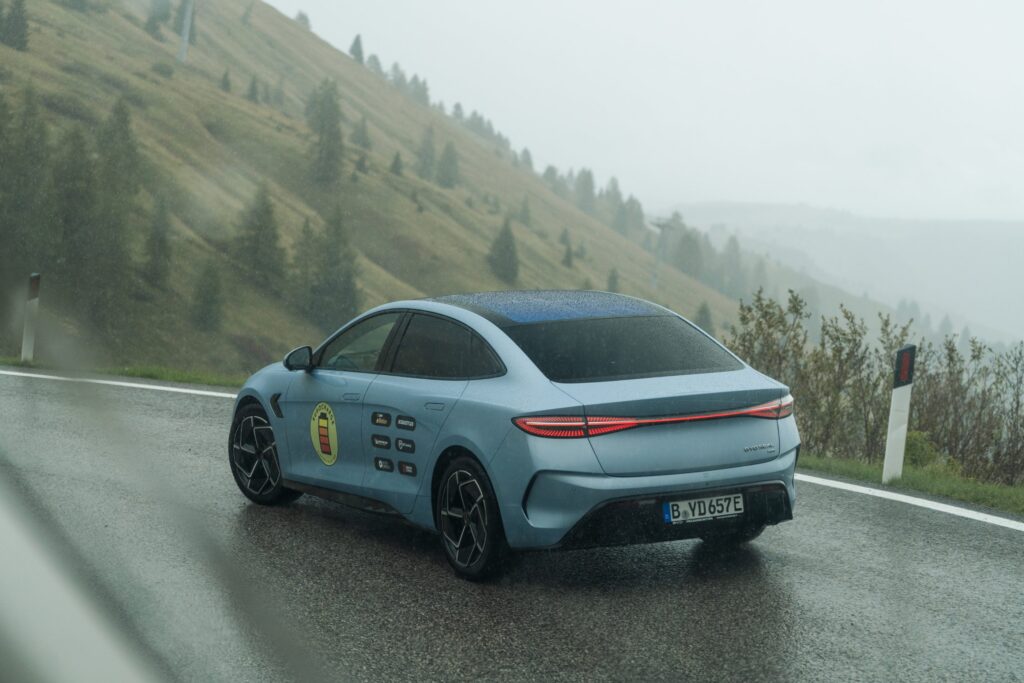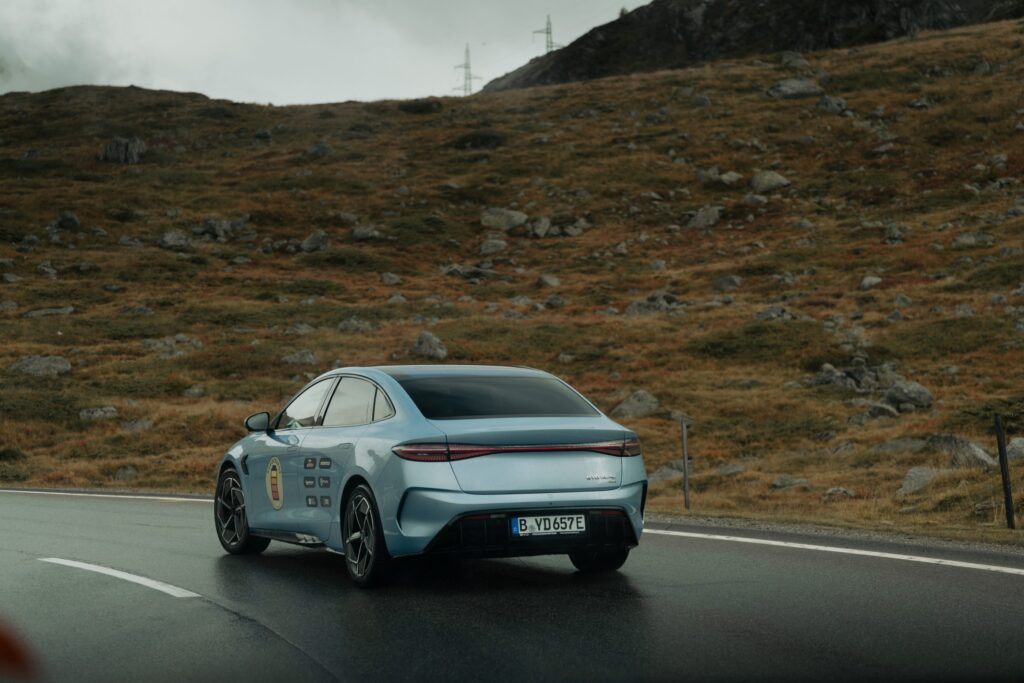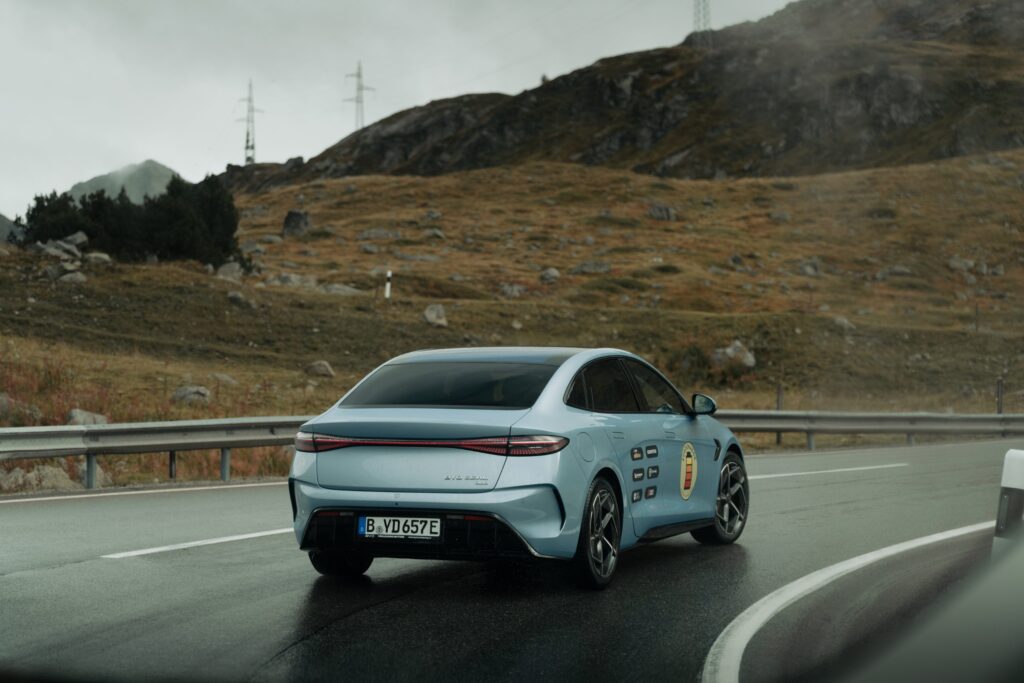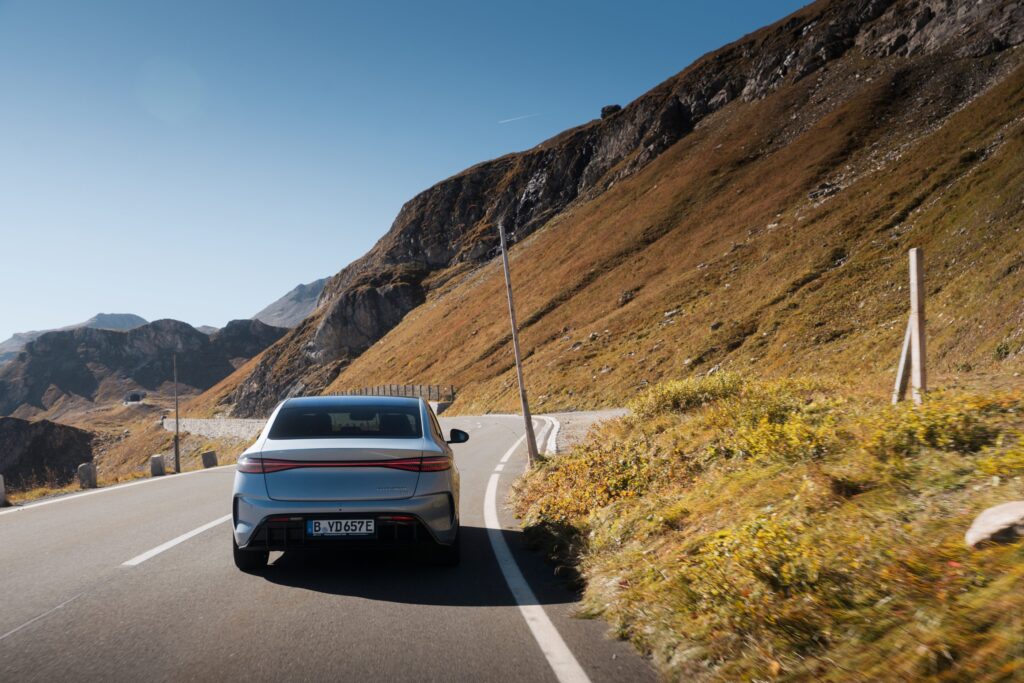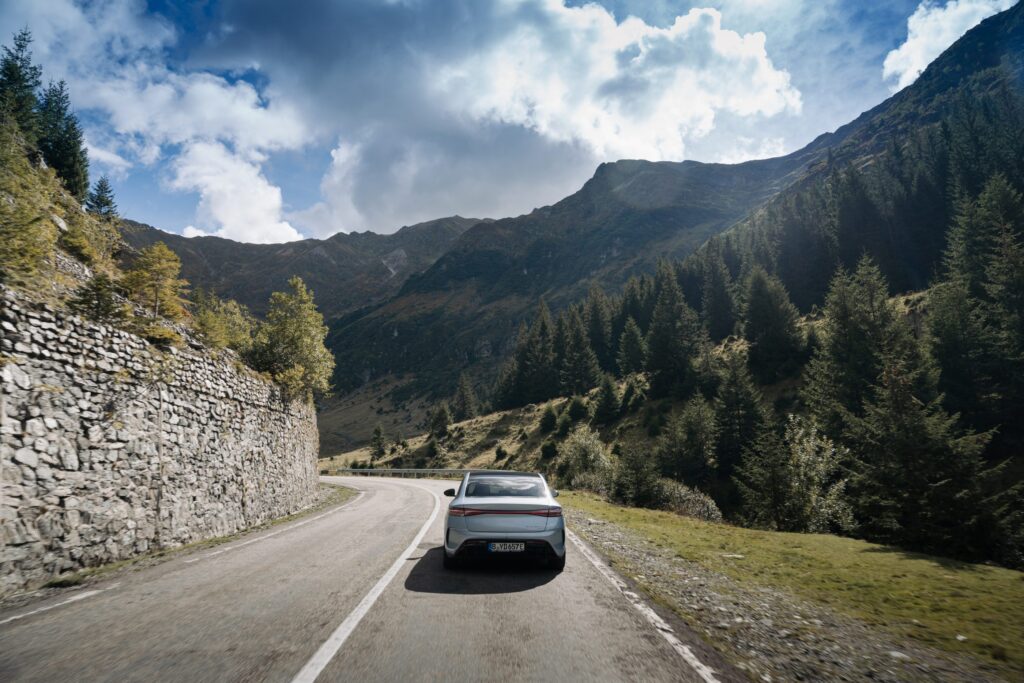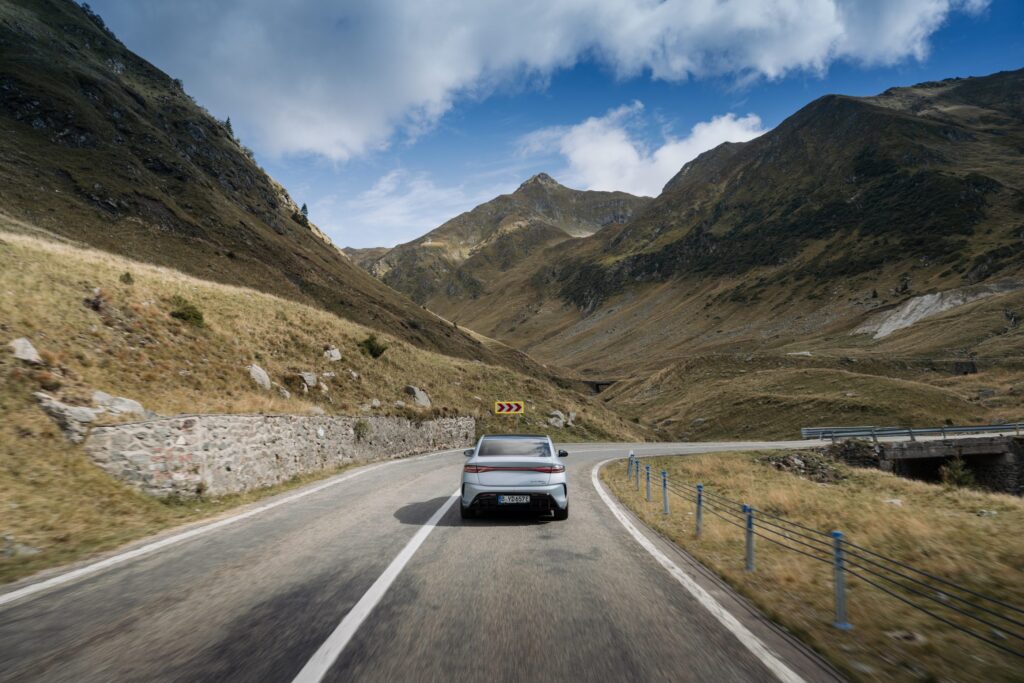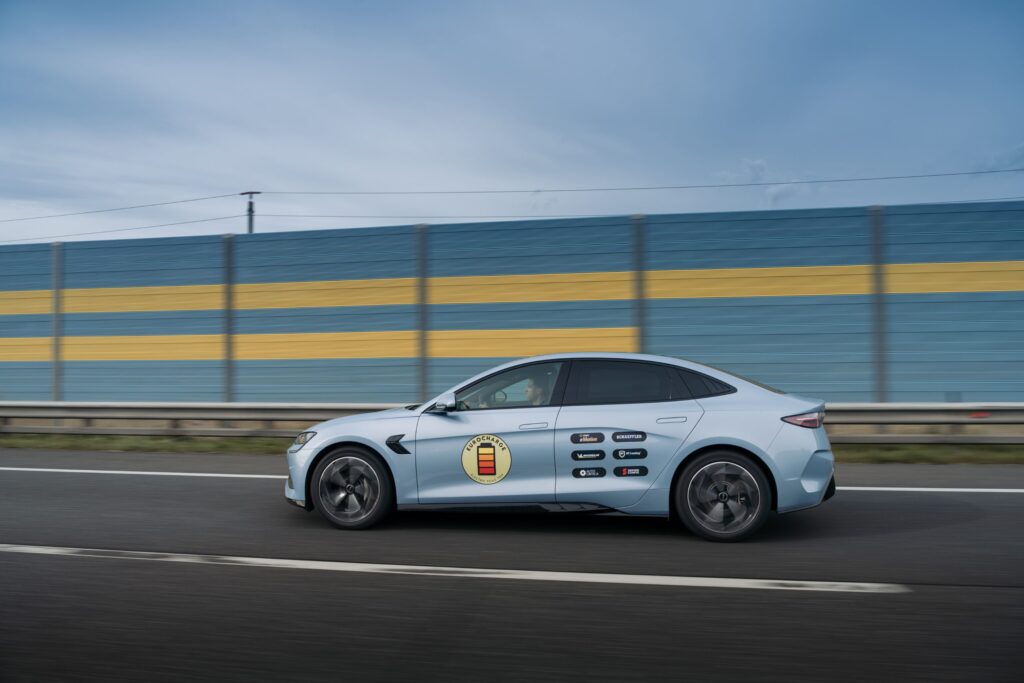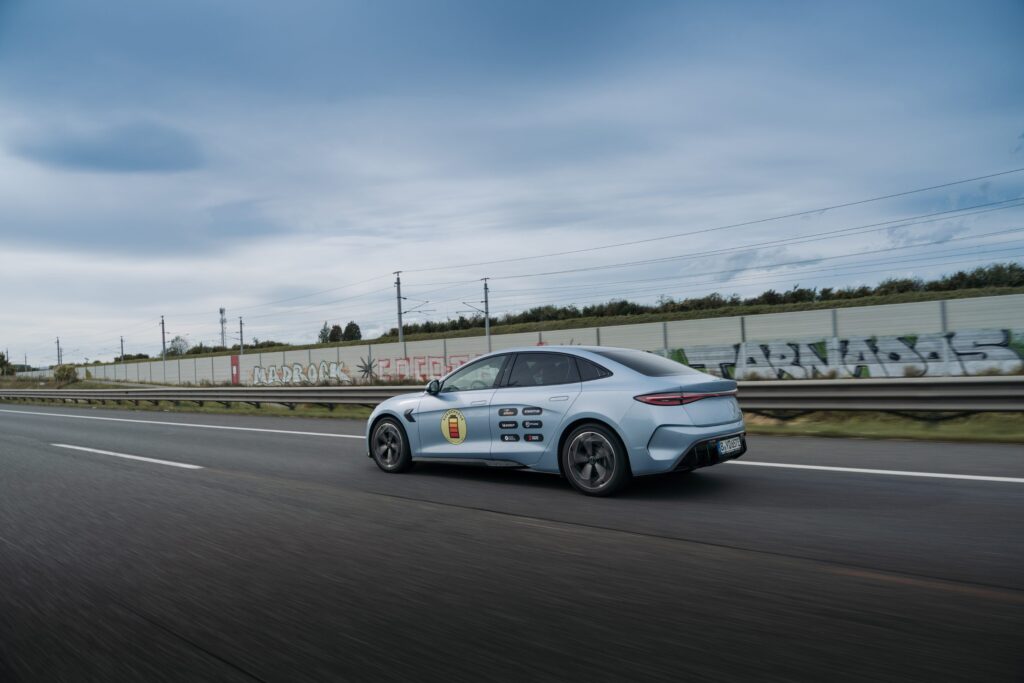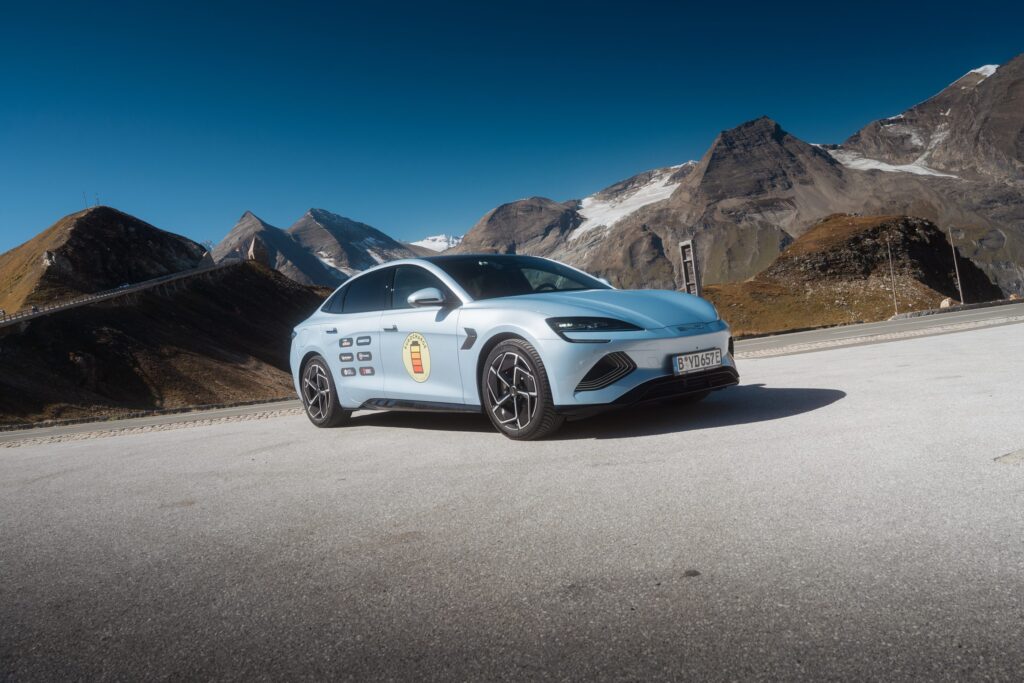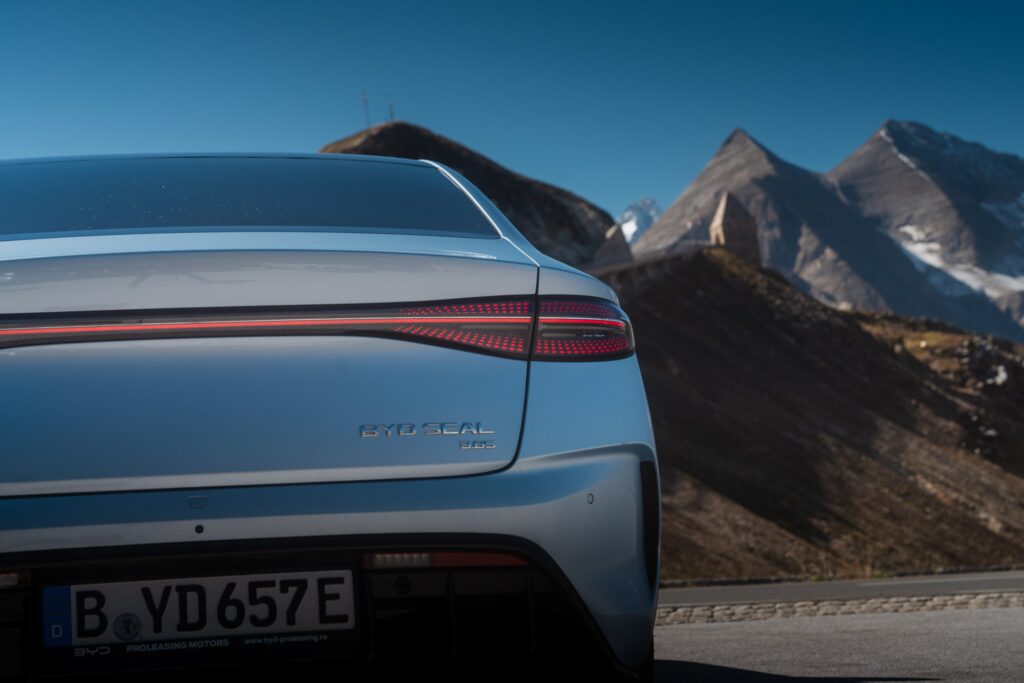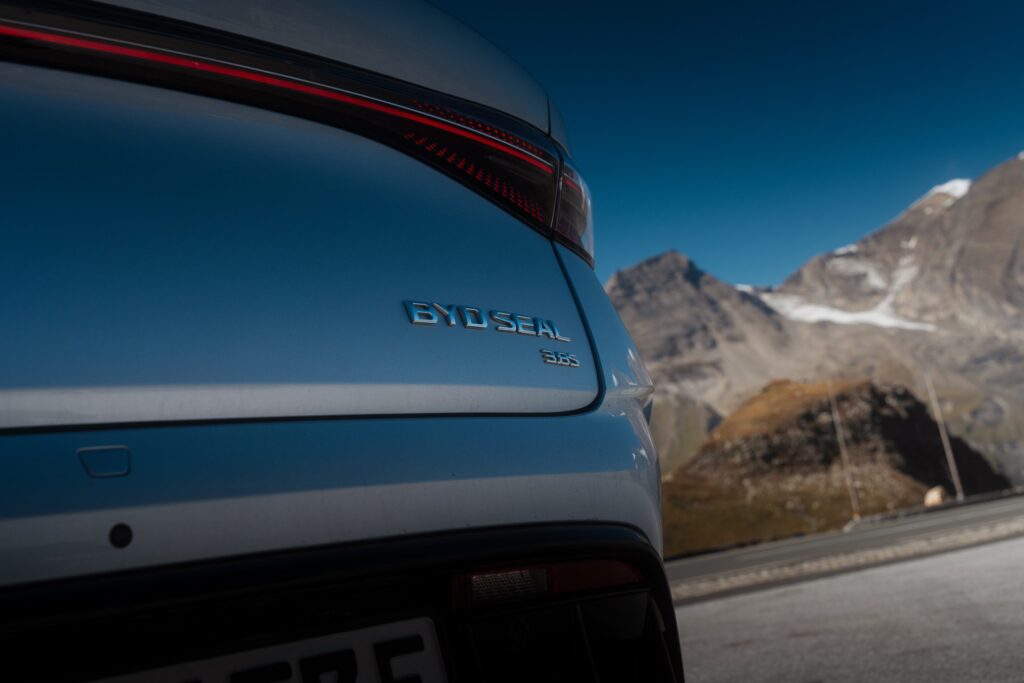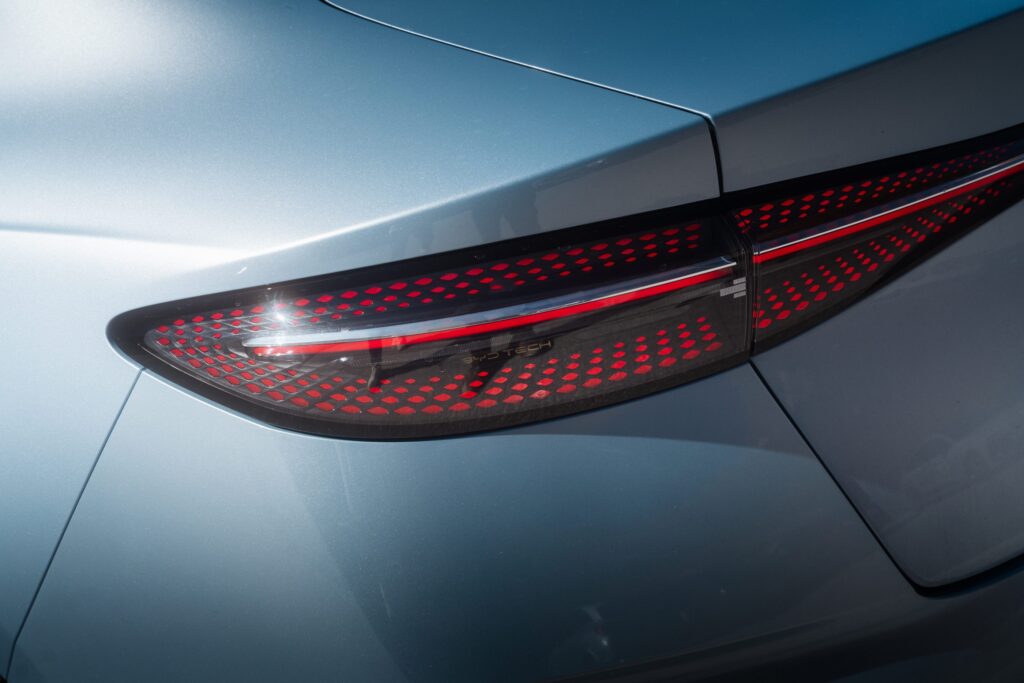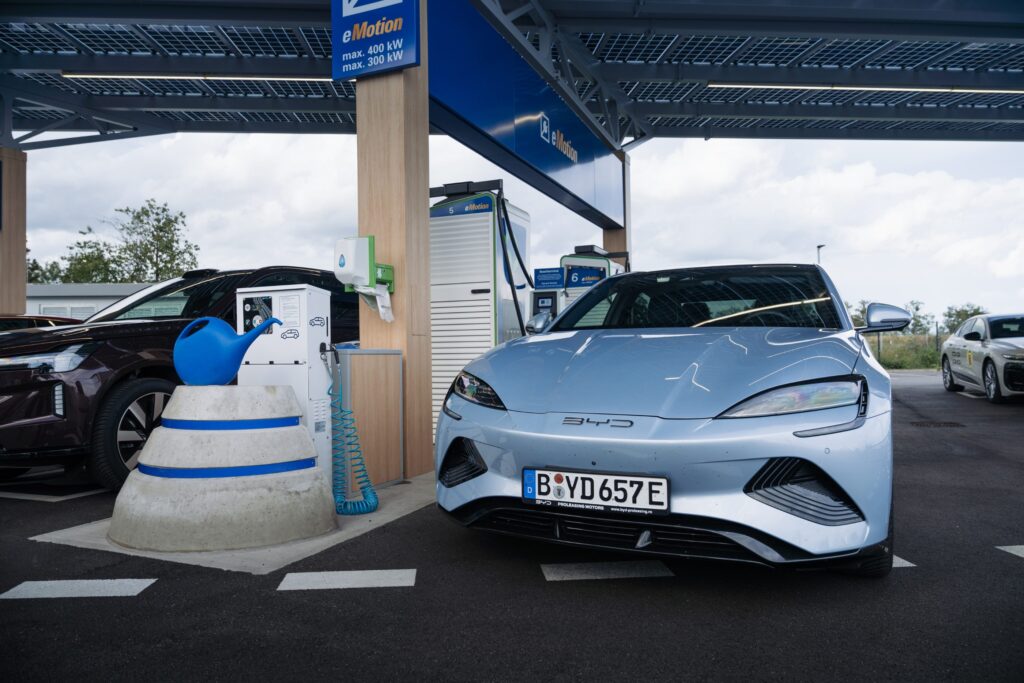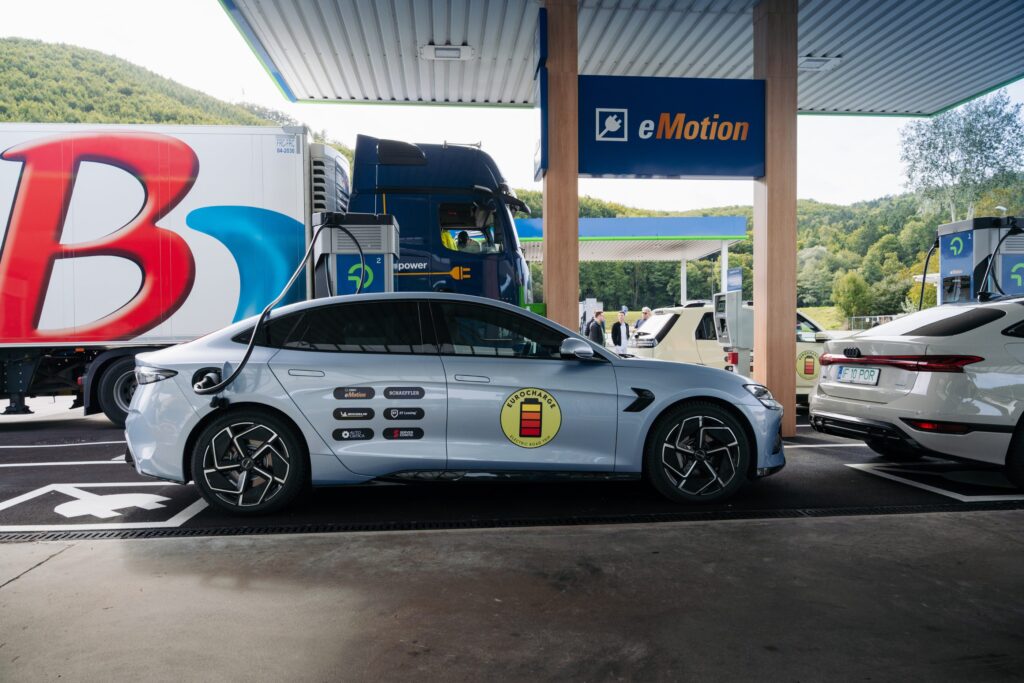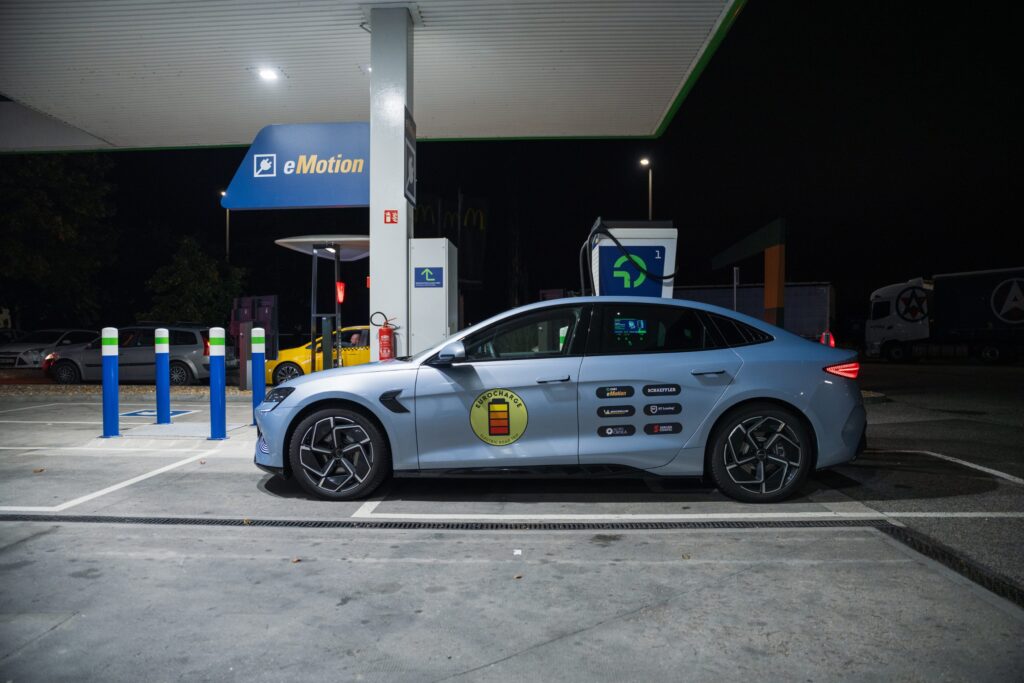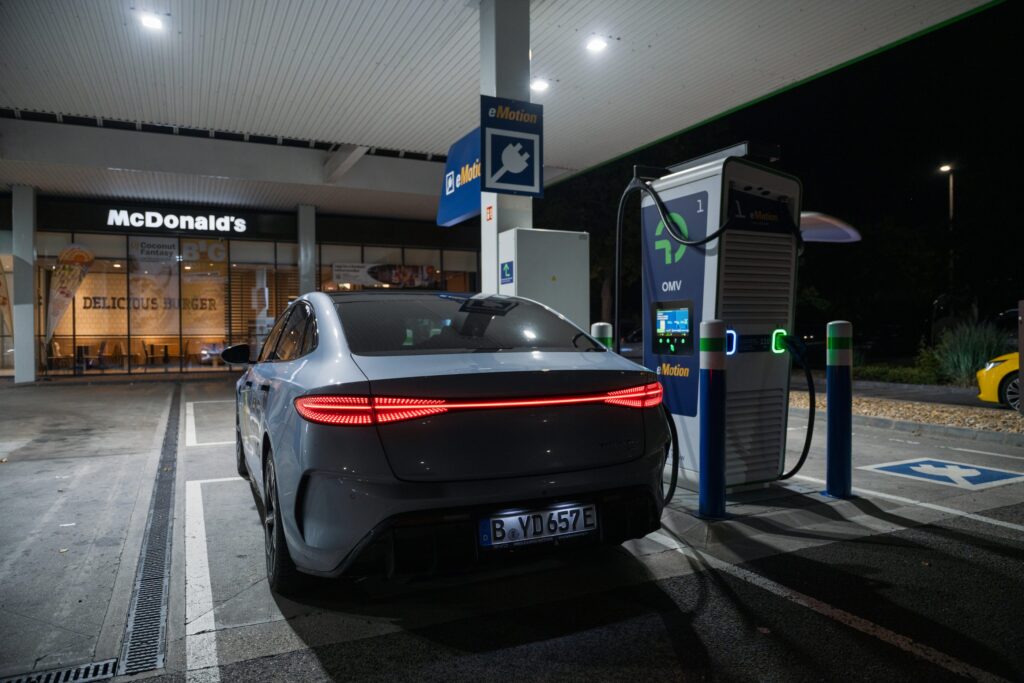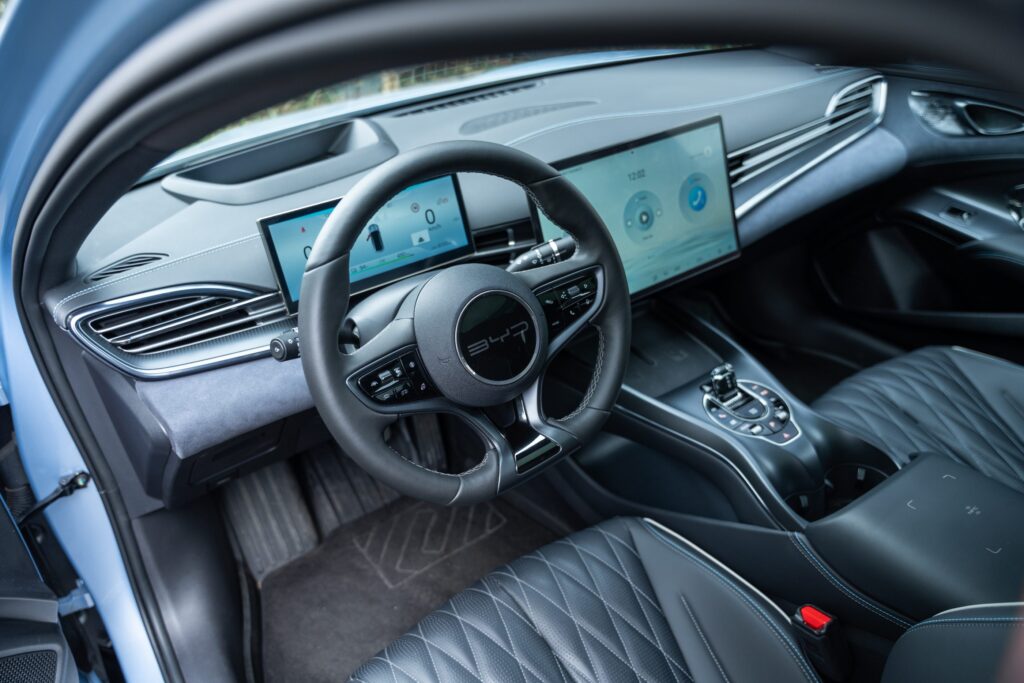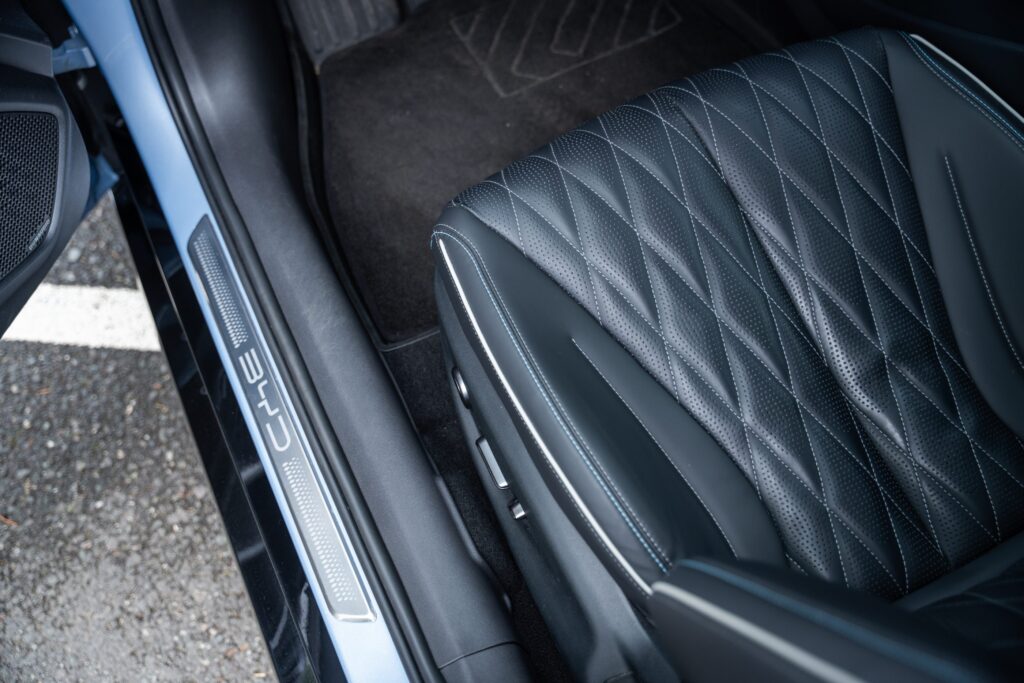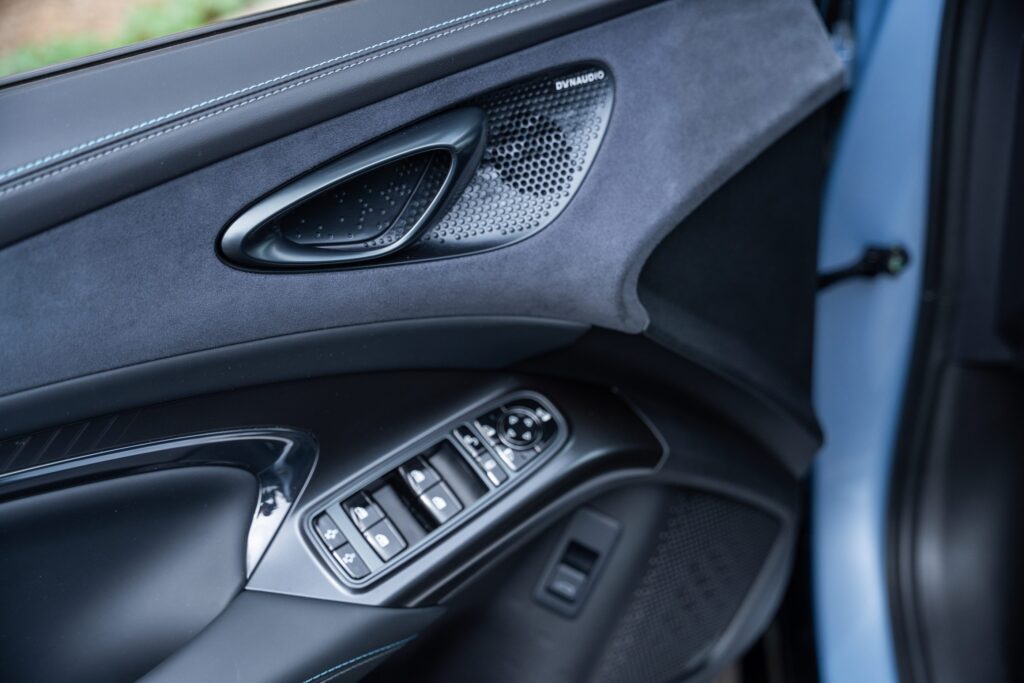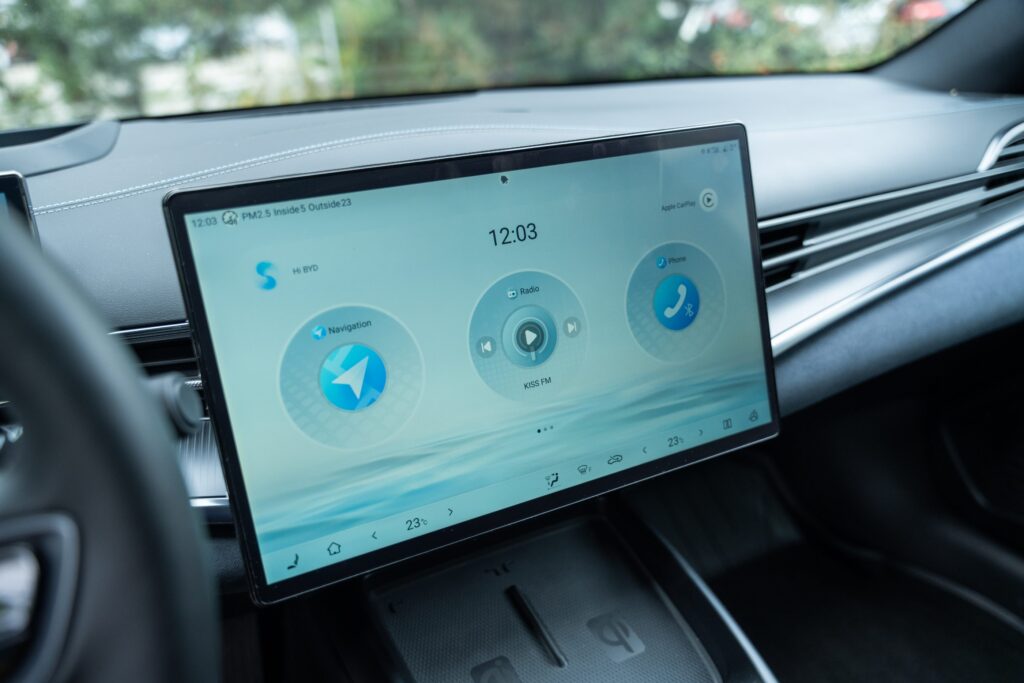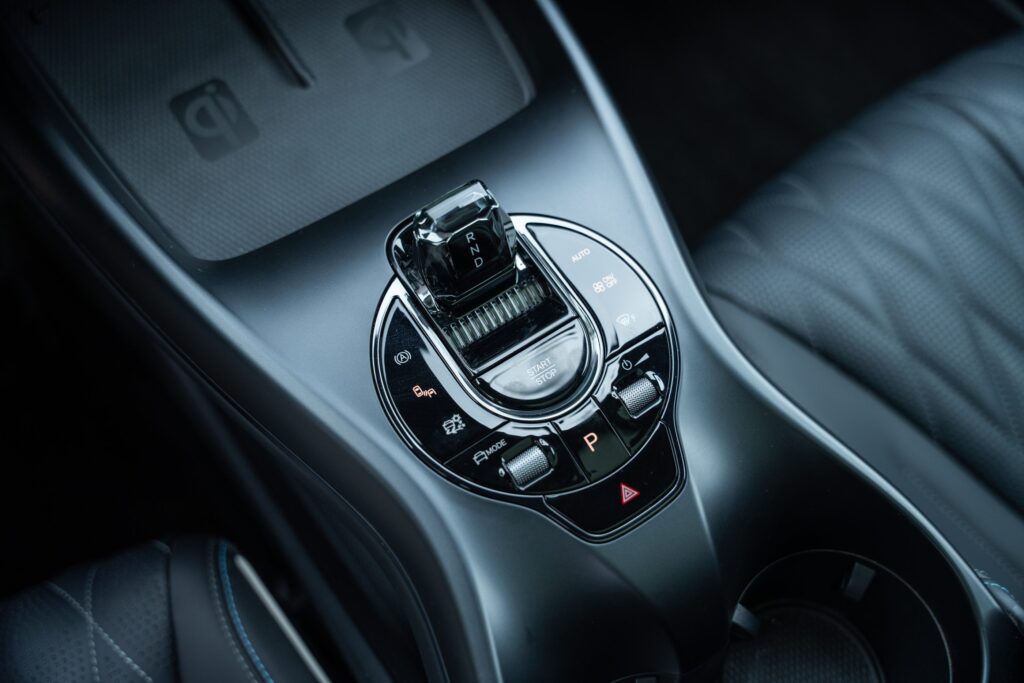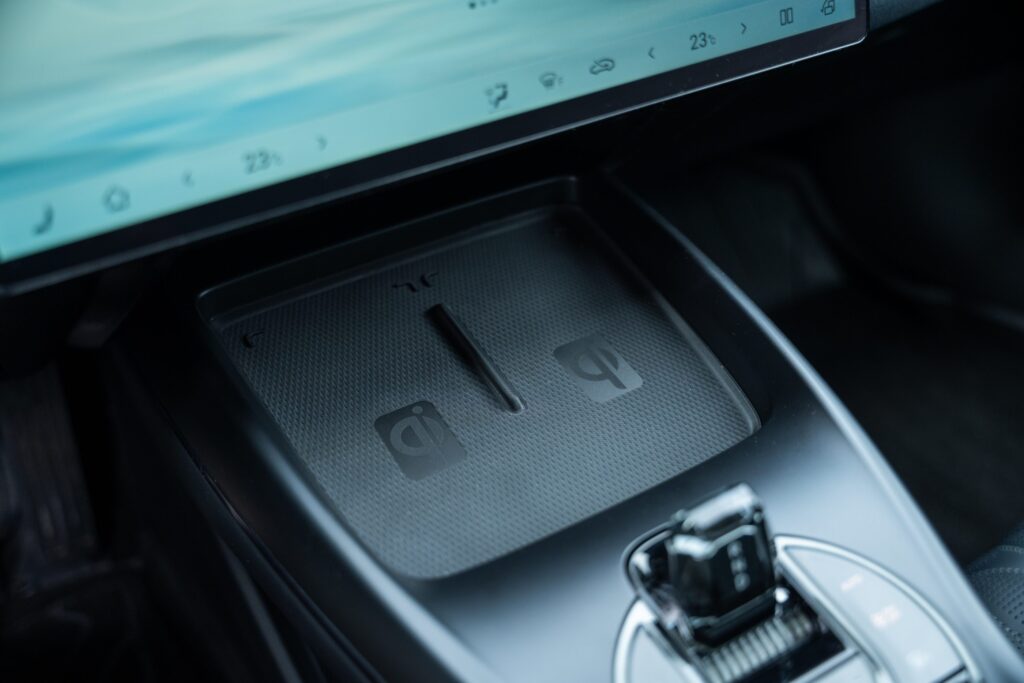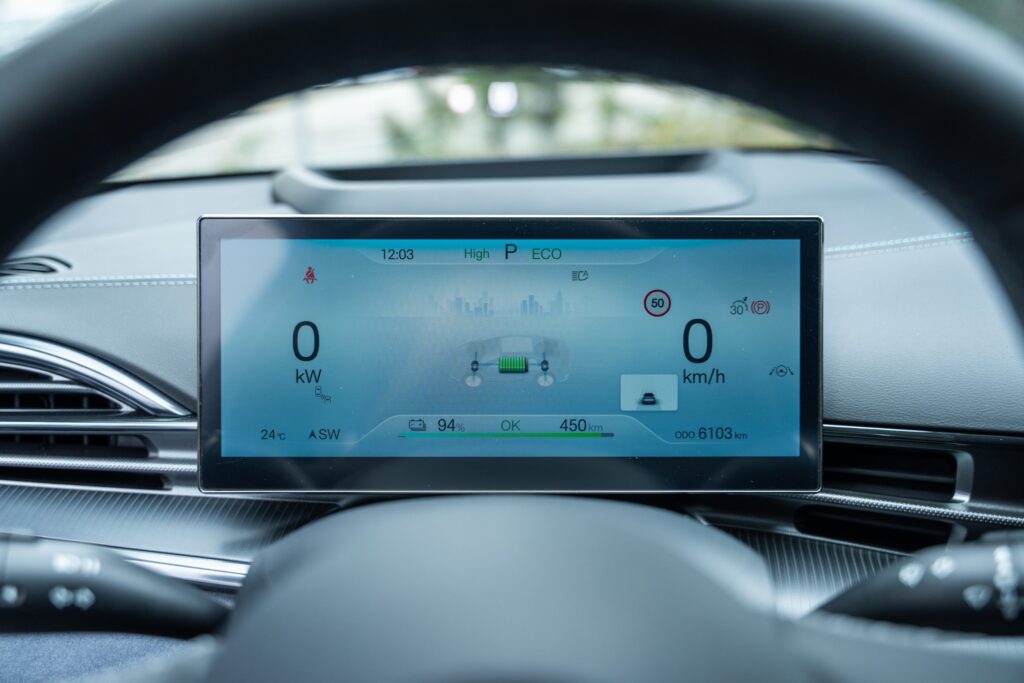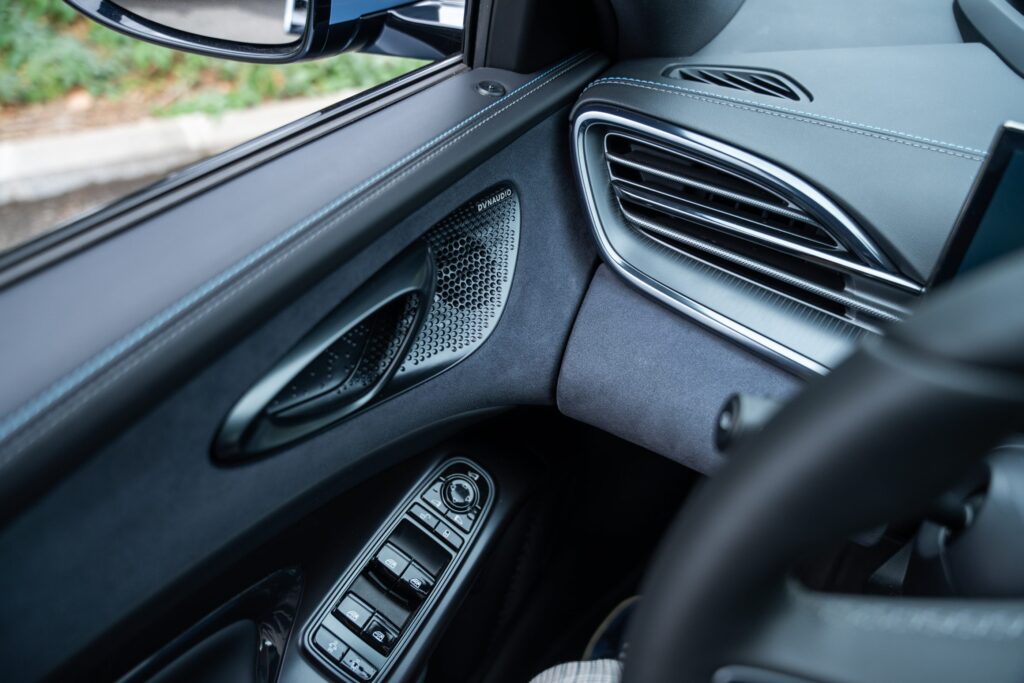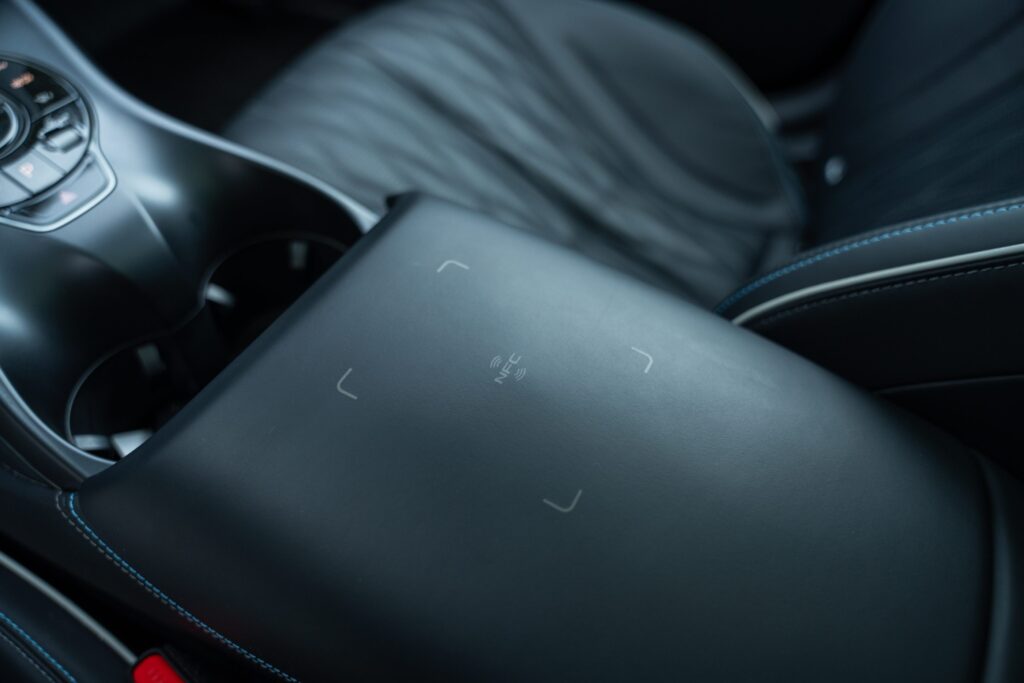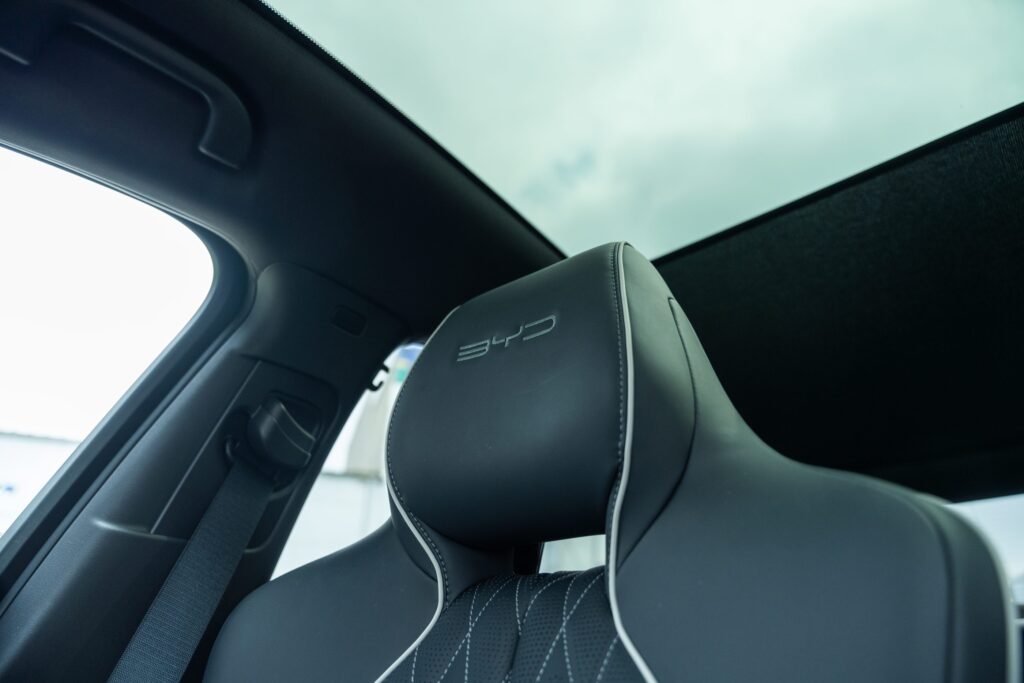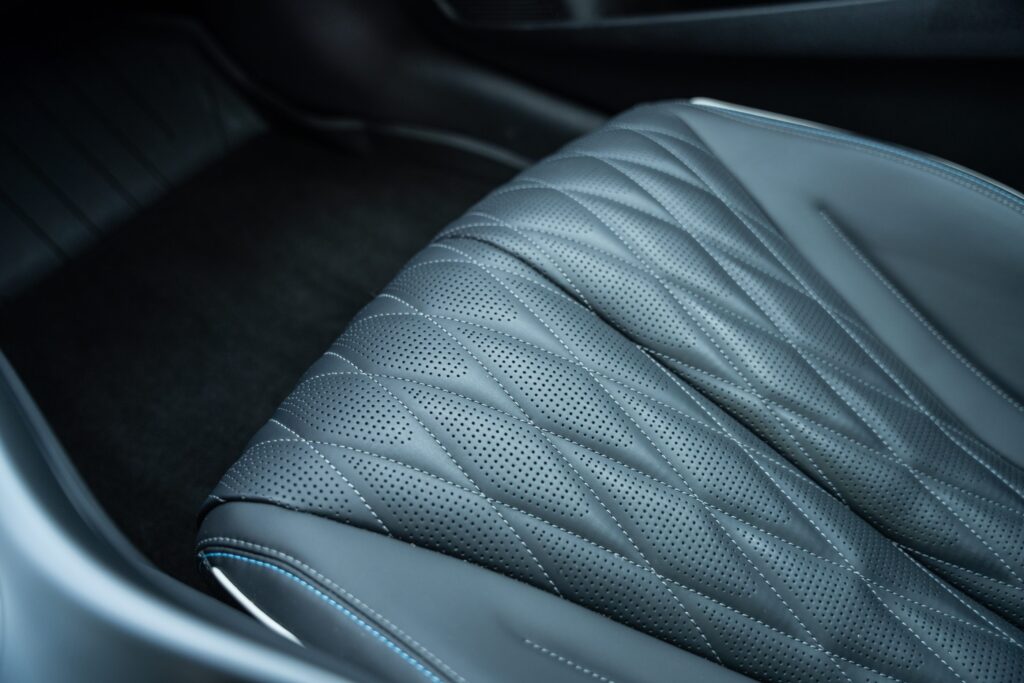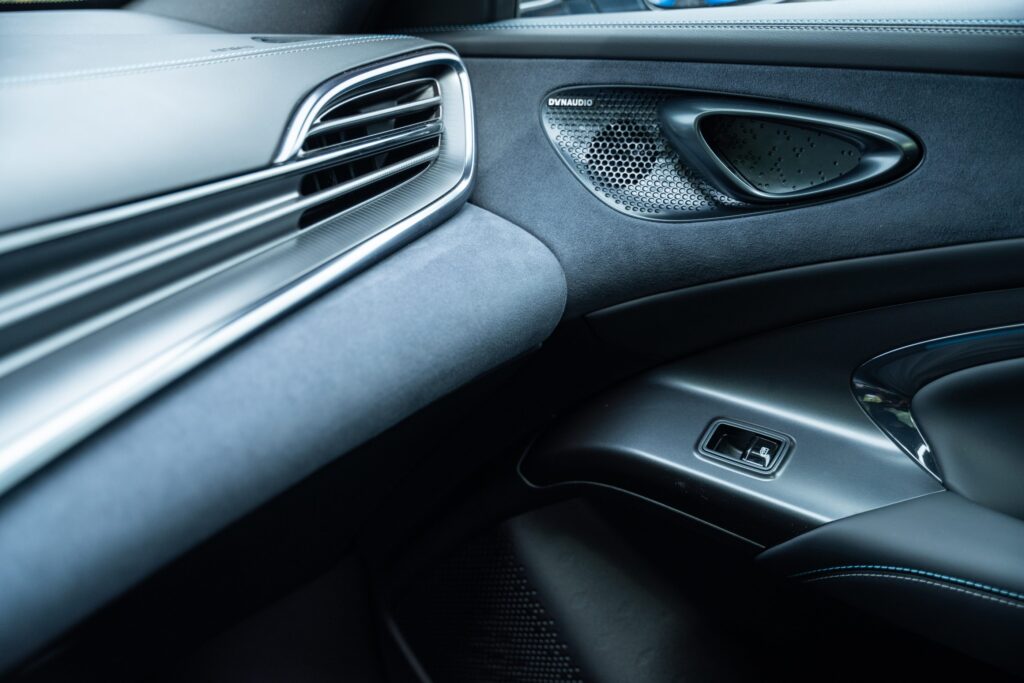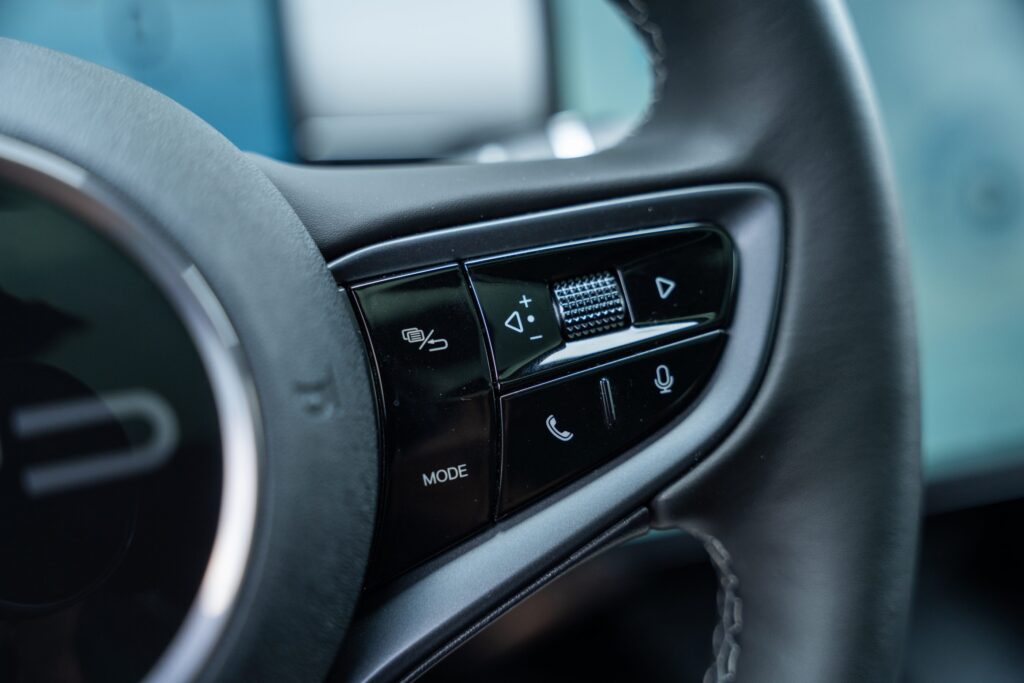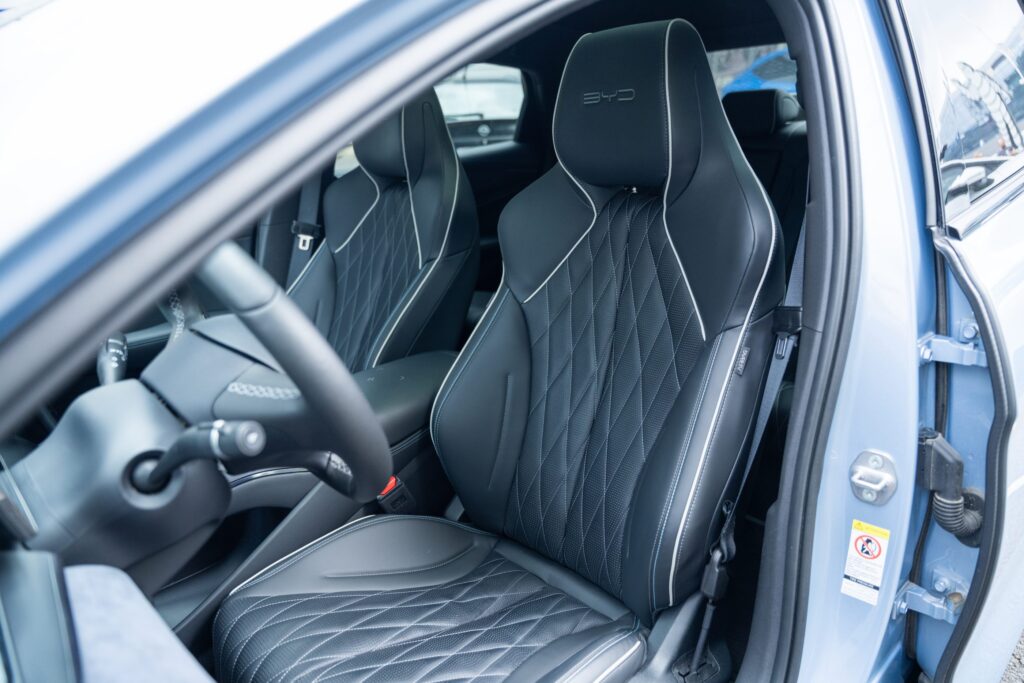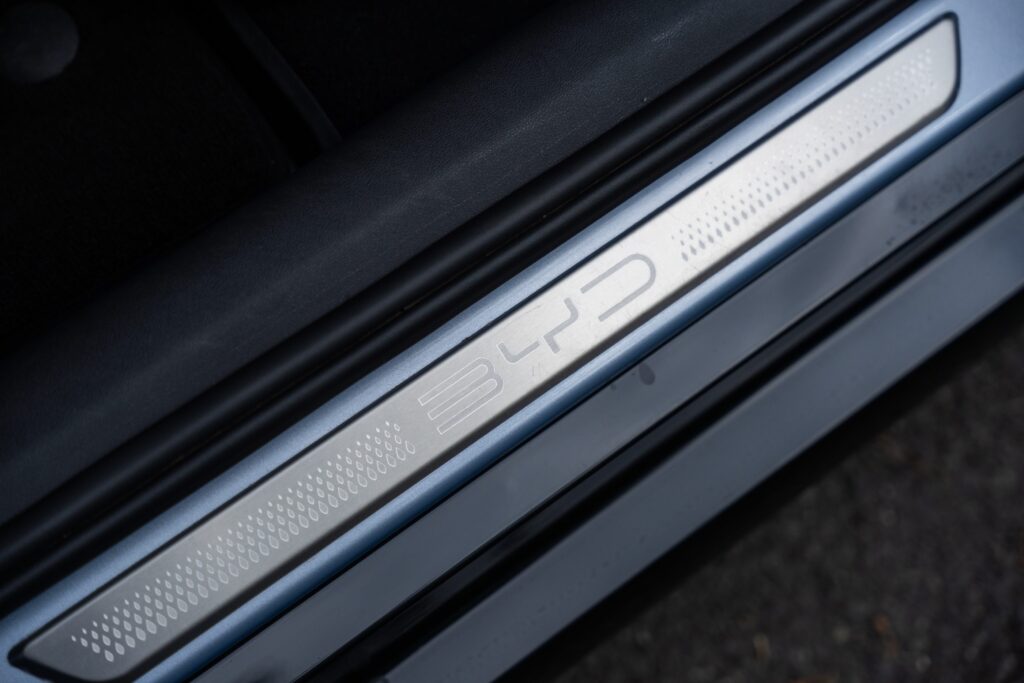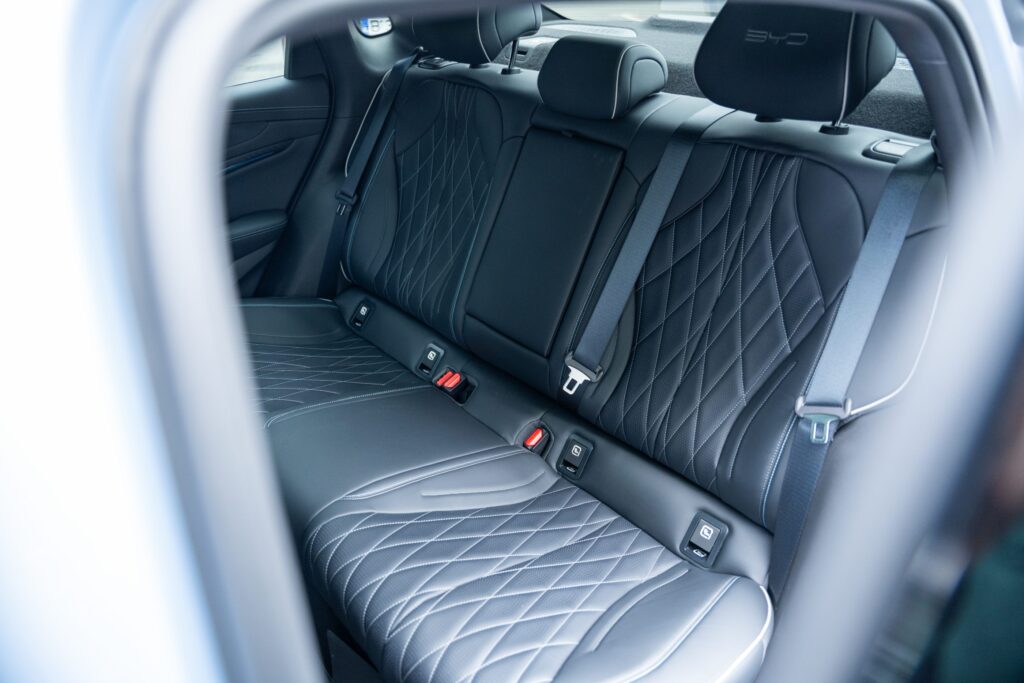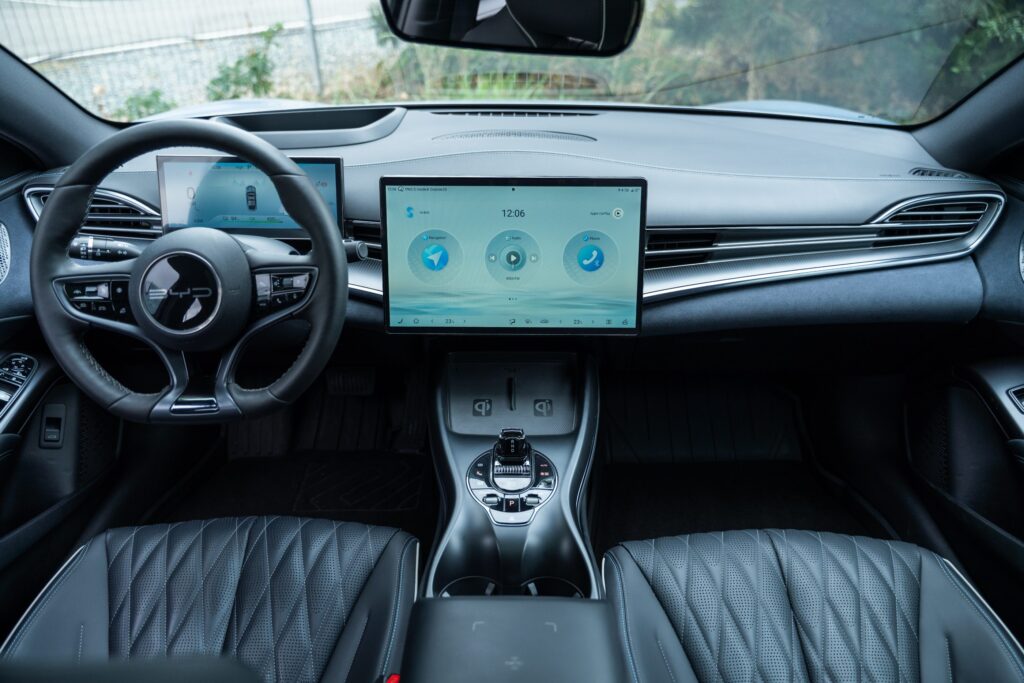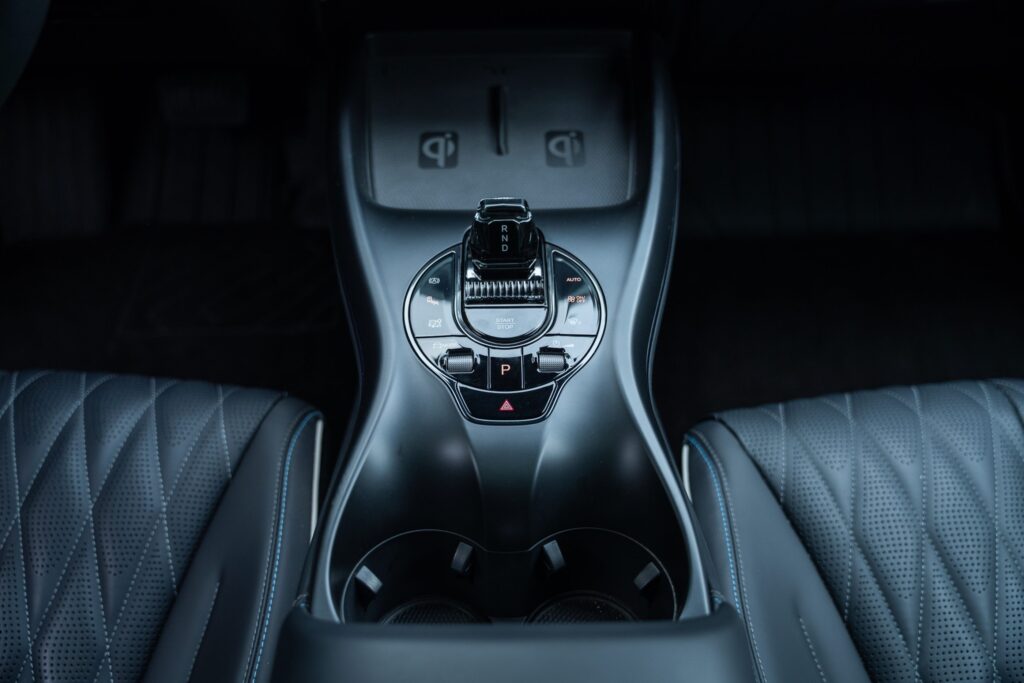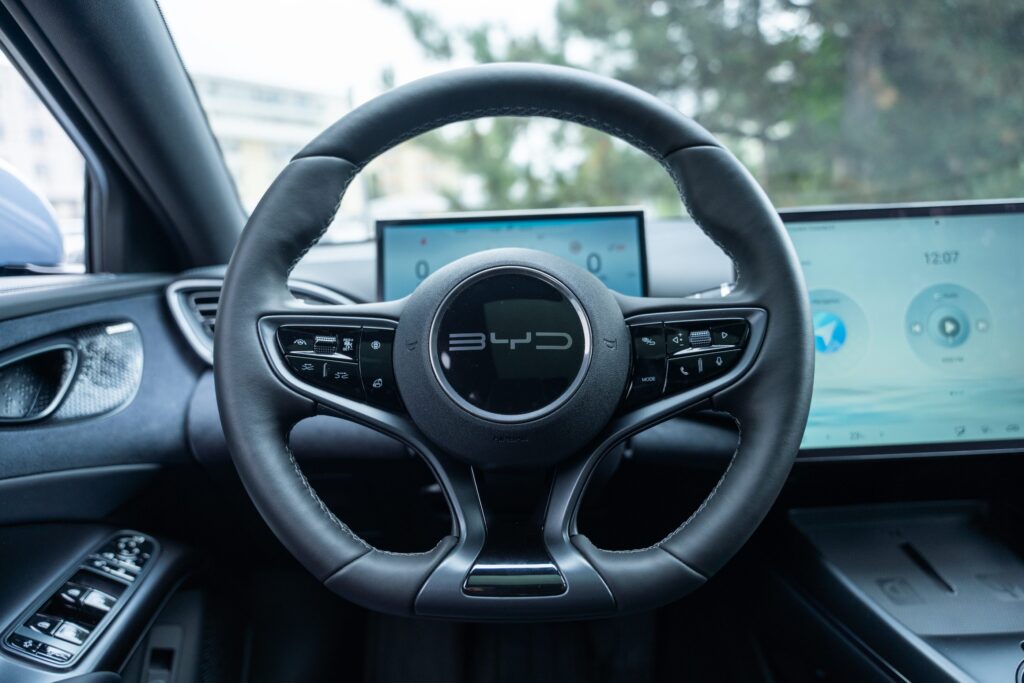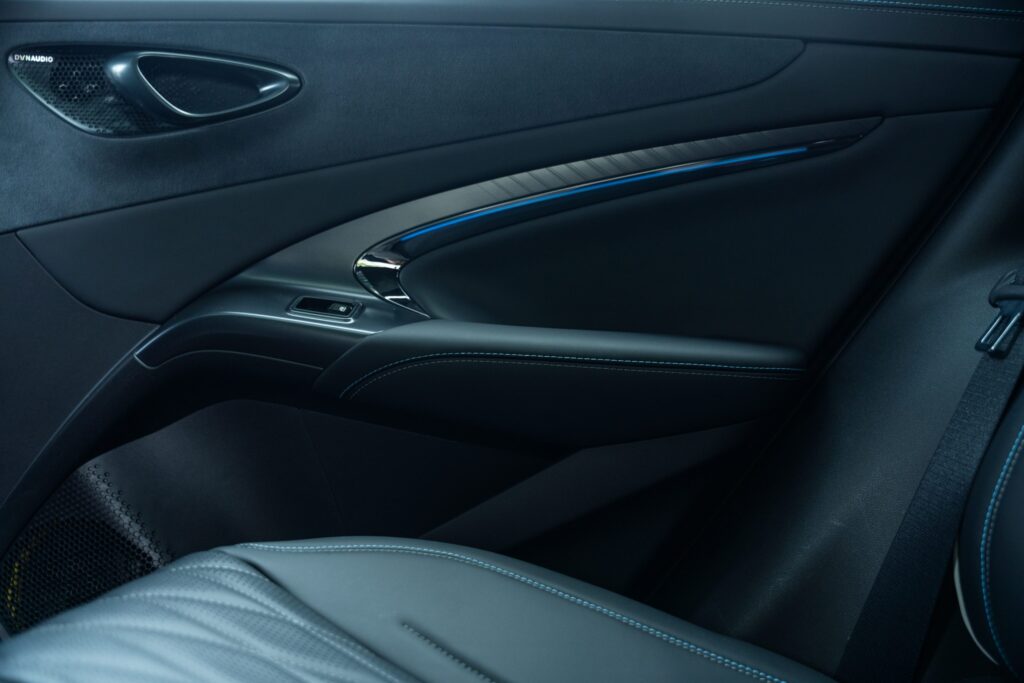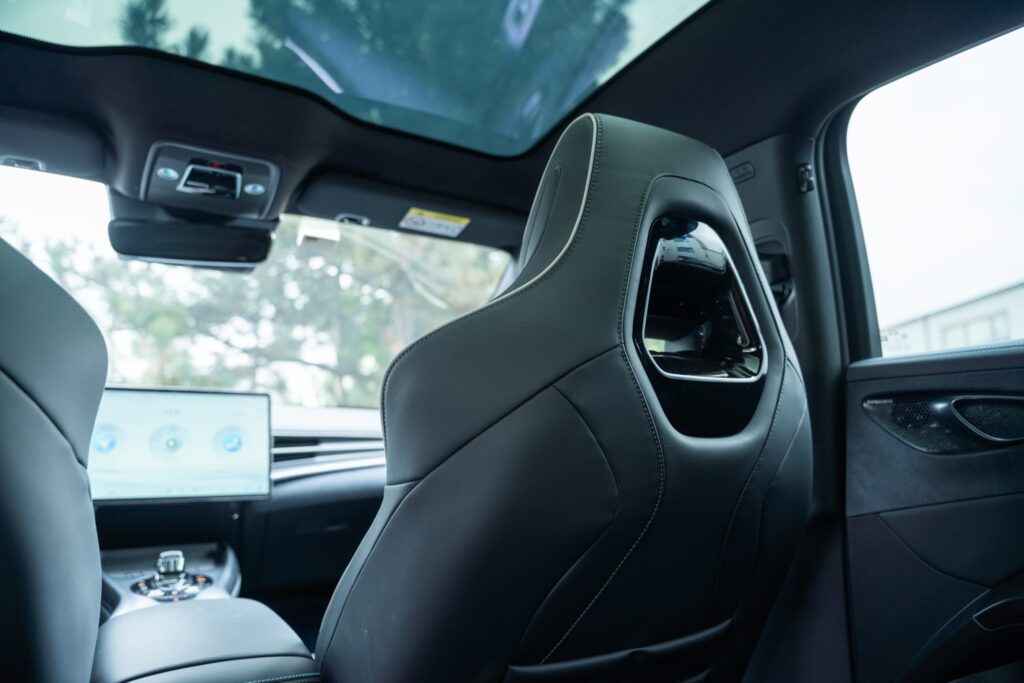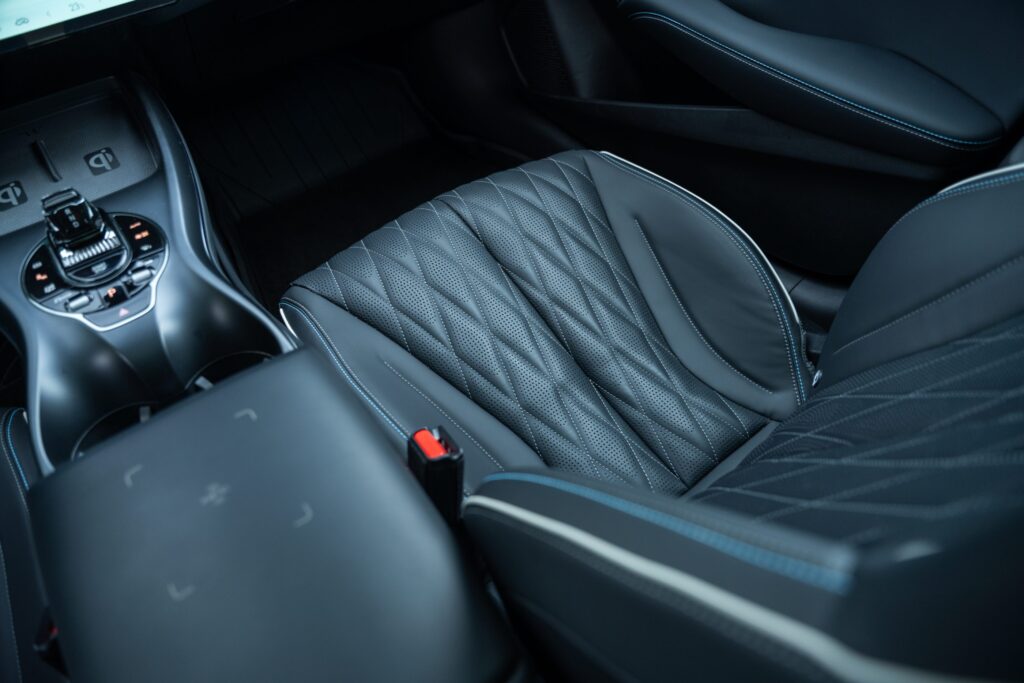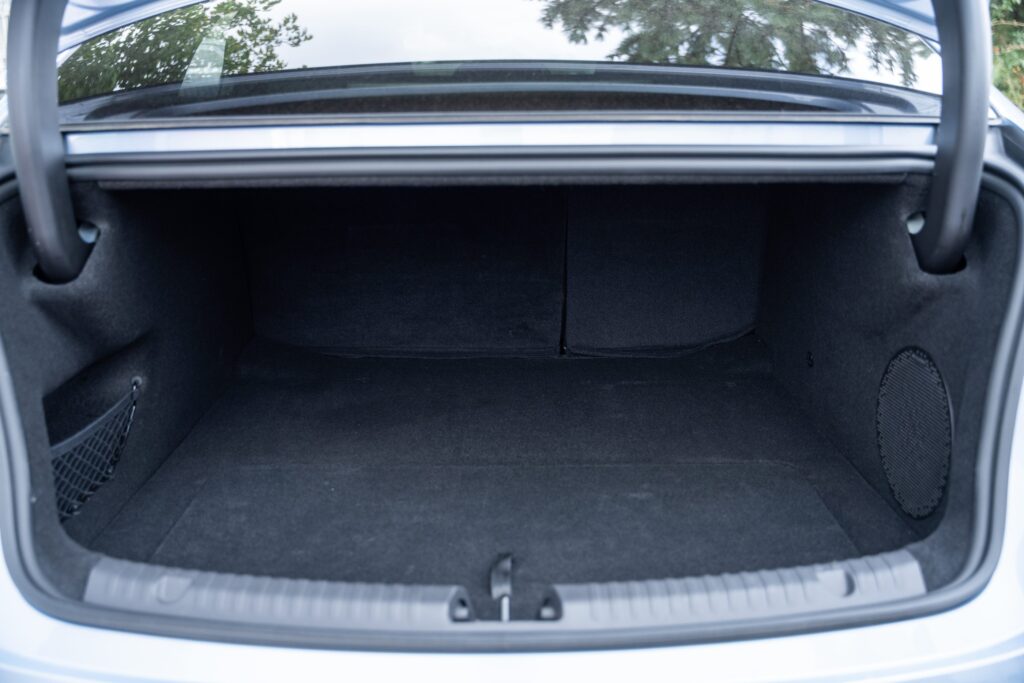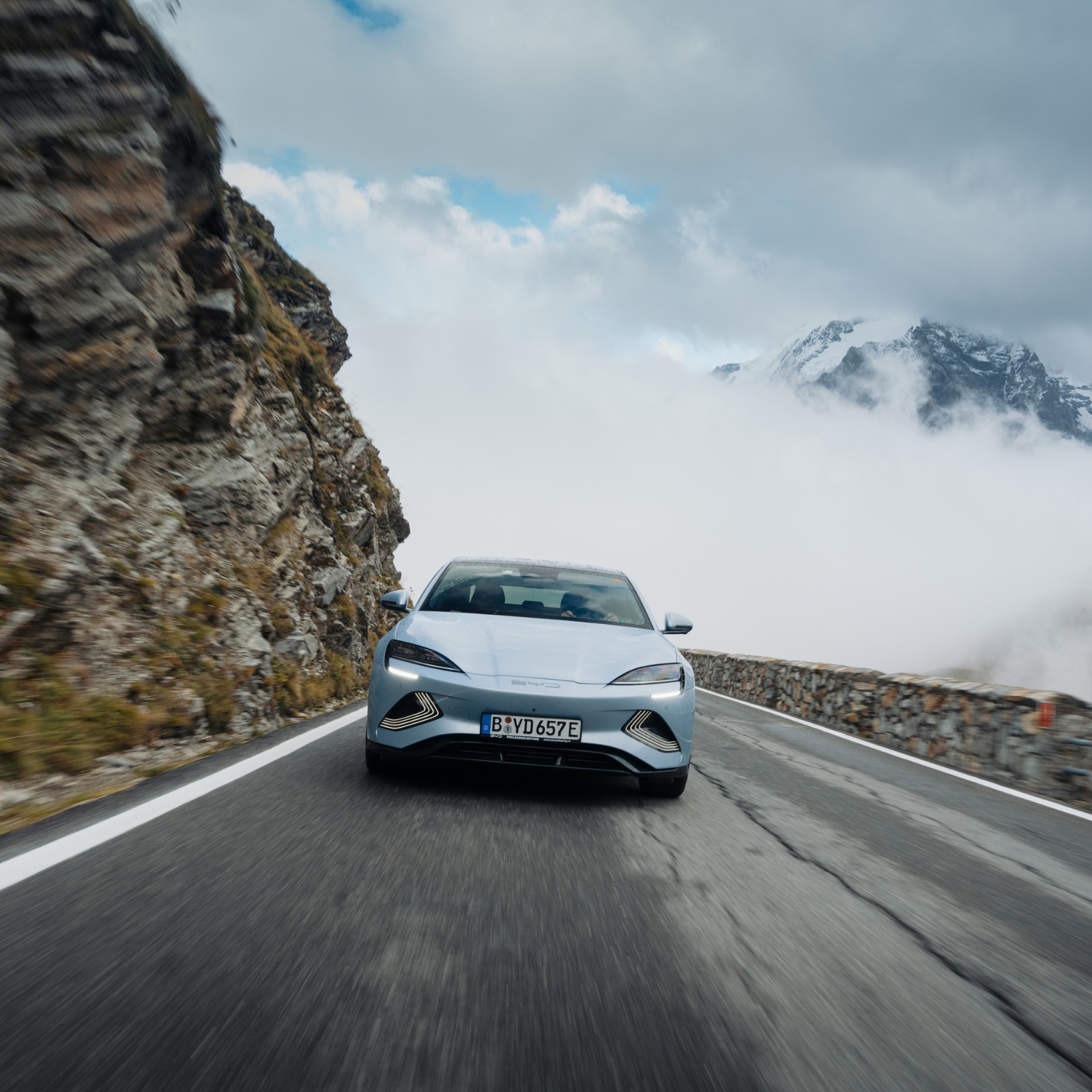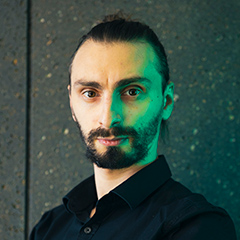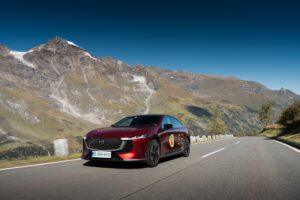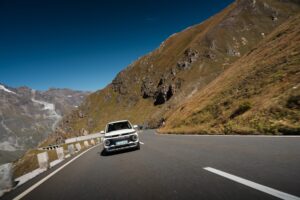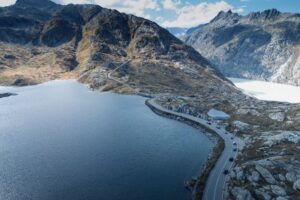The BYD Seal is one of the models that wants to conquer Europe. An aero-optimized sedan silhouette, a fluid design that doesn’t aim to shock (as we’ve seen from some Asian manufacturers that just recently landed in Europe) and an interior that combines 2025 technology with the materials that some of us fell in love with in our youth.
What’s more, the technological package is not to be neglected: 82.5-kWh battery (a good value compared to what the market offers now), two electric motors (ready to deliver 530 horsepower – it was the most powerful model in EUROCHARGE by Schaeffler) and a charging power rating that would deserve an upgrade (the 150-kW capability currently offered is not great but not terrible either).
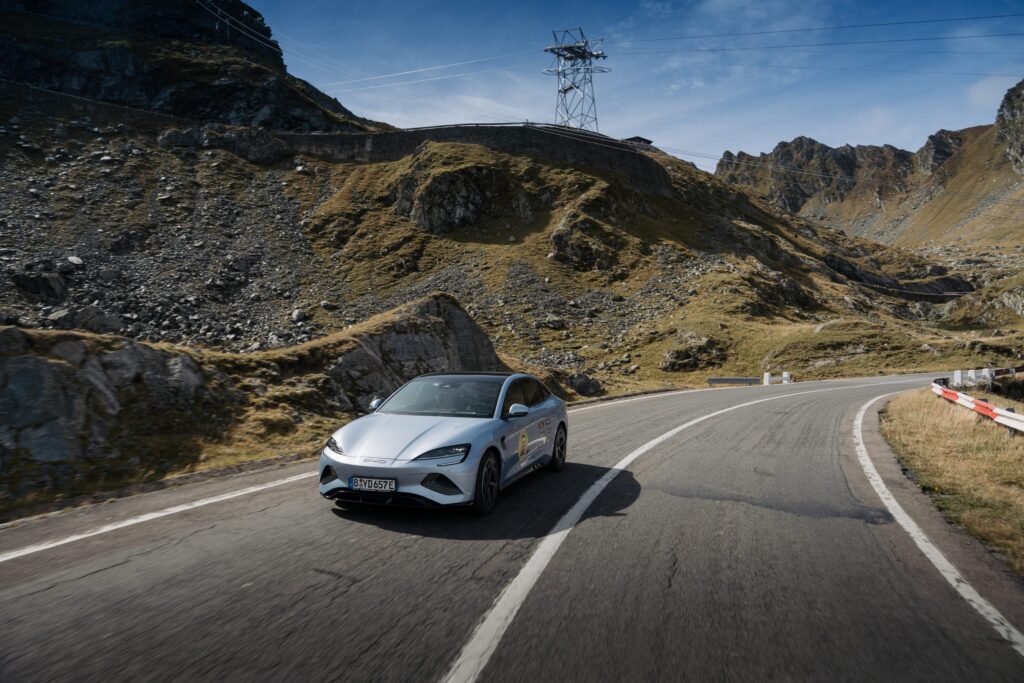
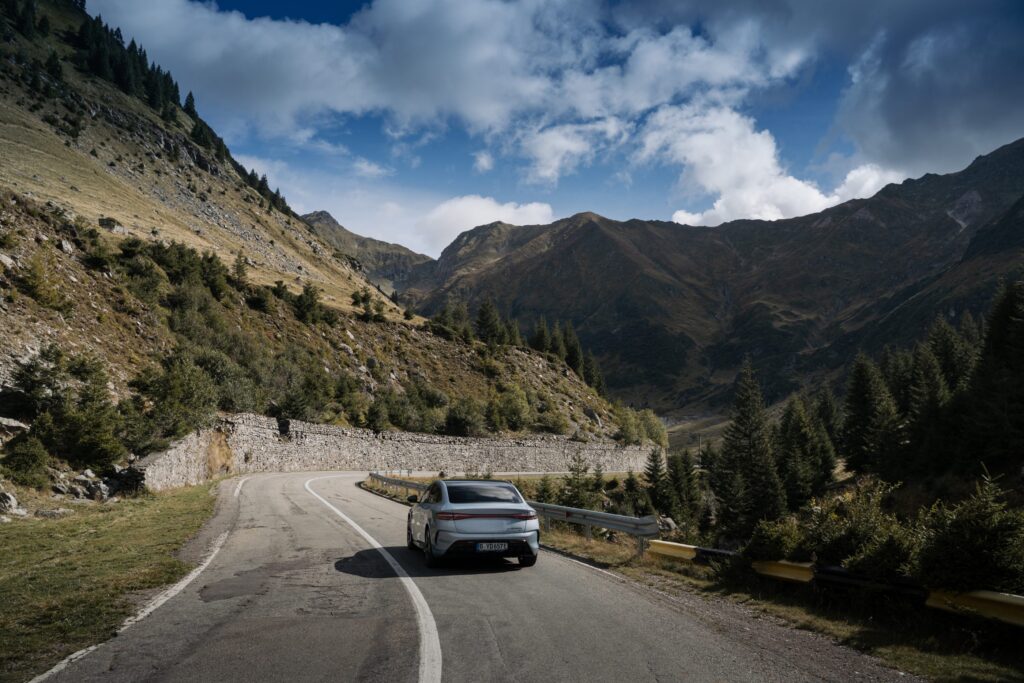
Before we draw the curtain on EUROCHARGE 2025, let’s take a closer look at the data we’ve gathered to see where did the Seal excel, where it didn’t, where it performed brilliantly and what areas could use some improvement.
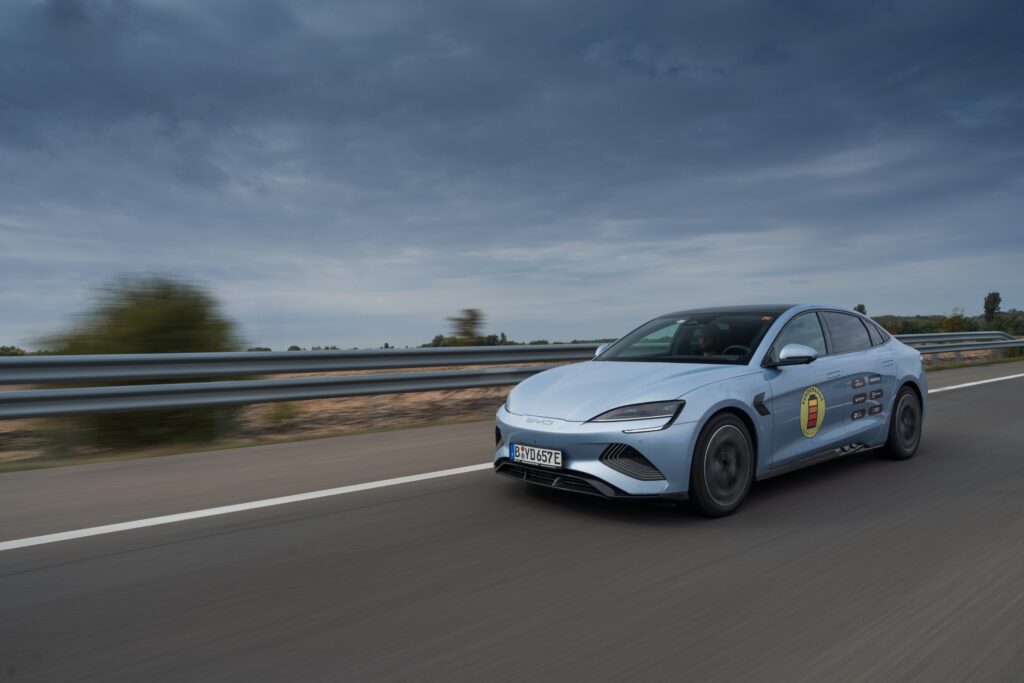
BYD Seal: daily infographics on consumption, real range, charging costs
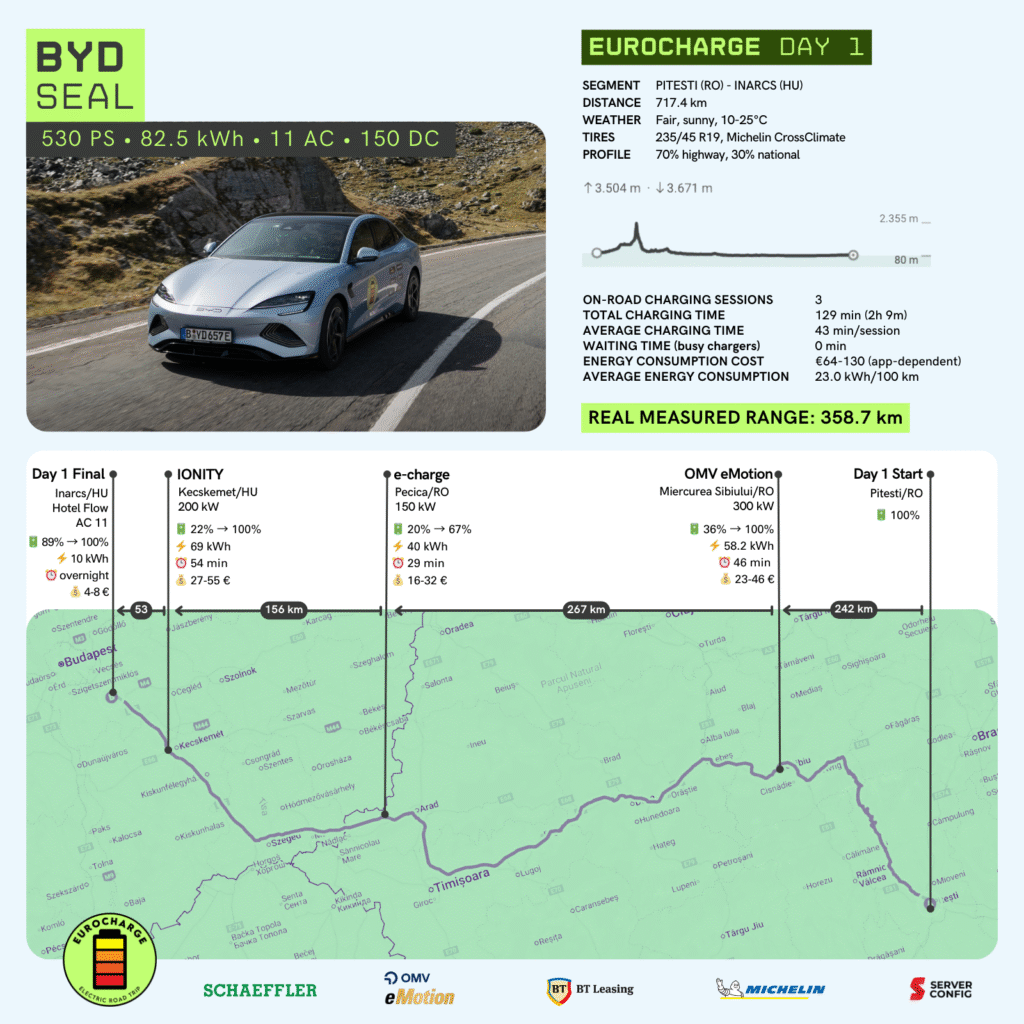
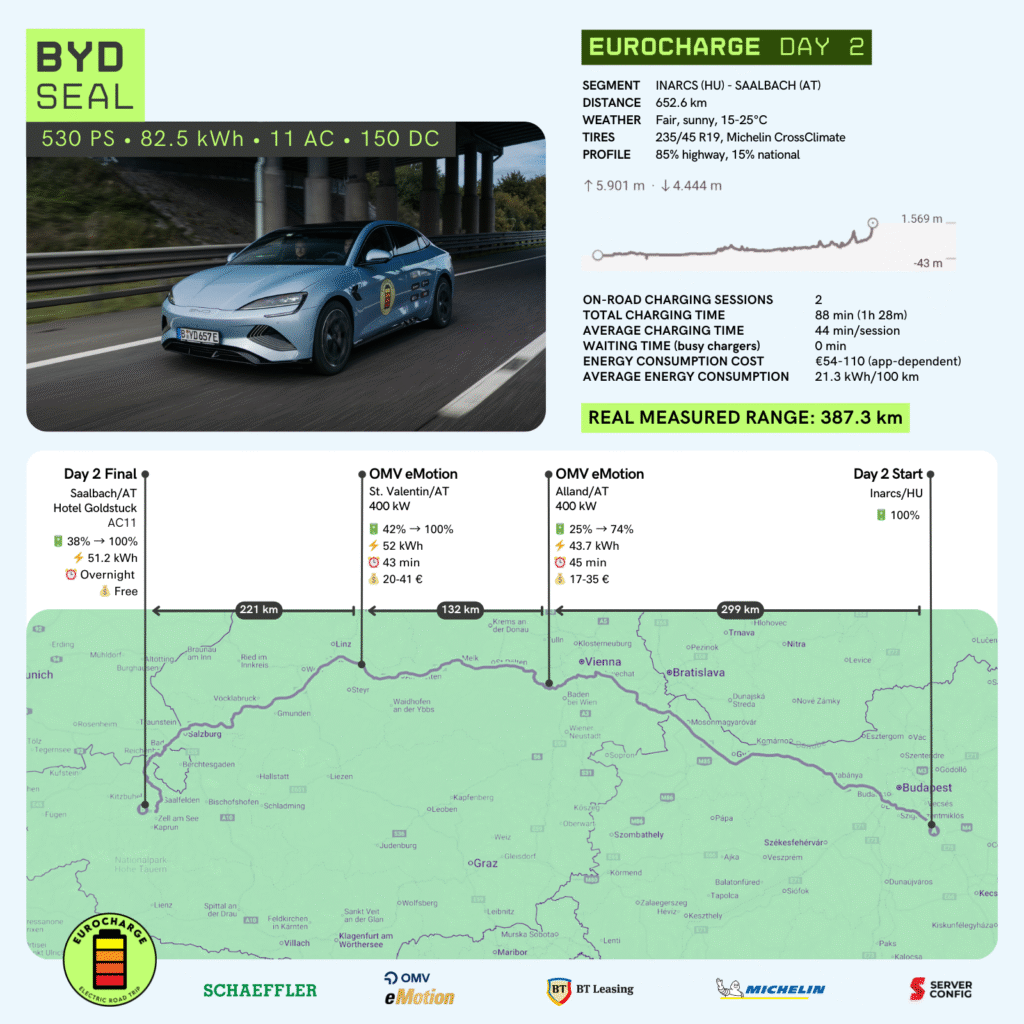
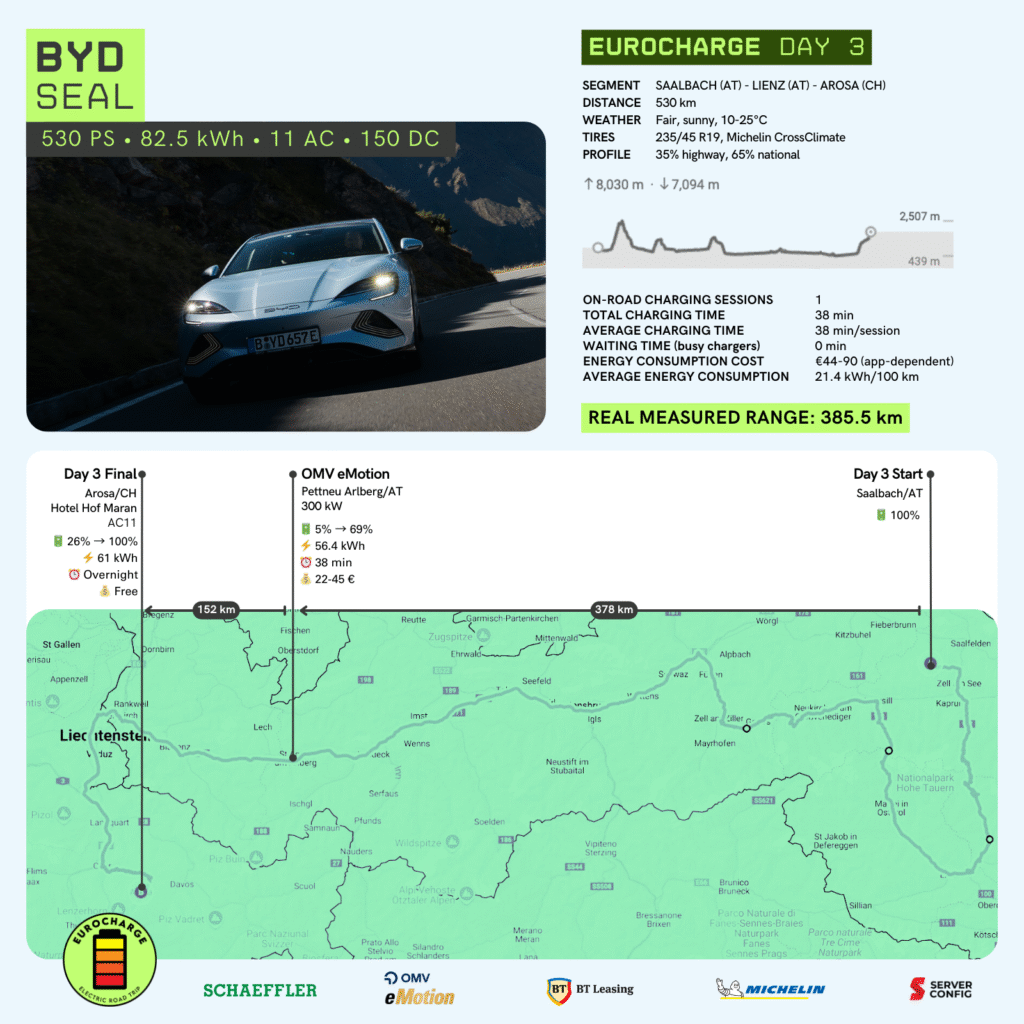
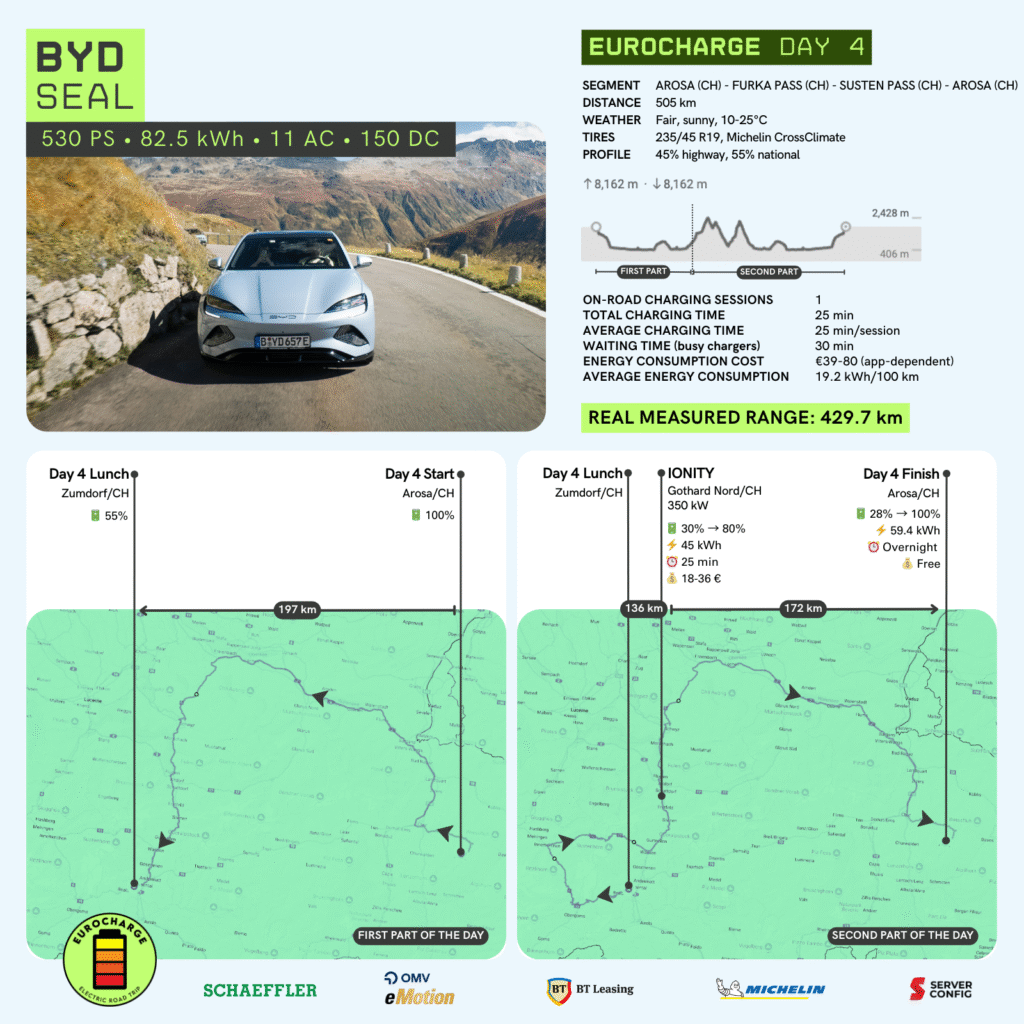
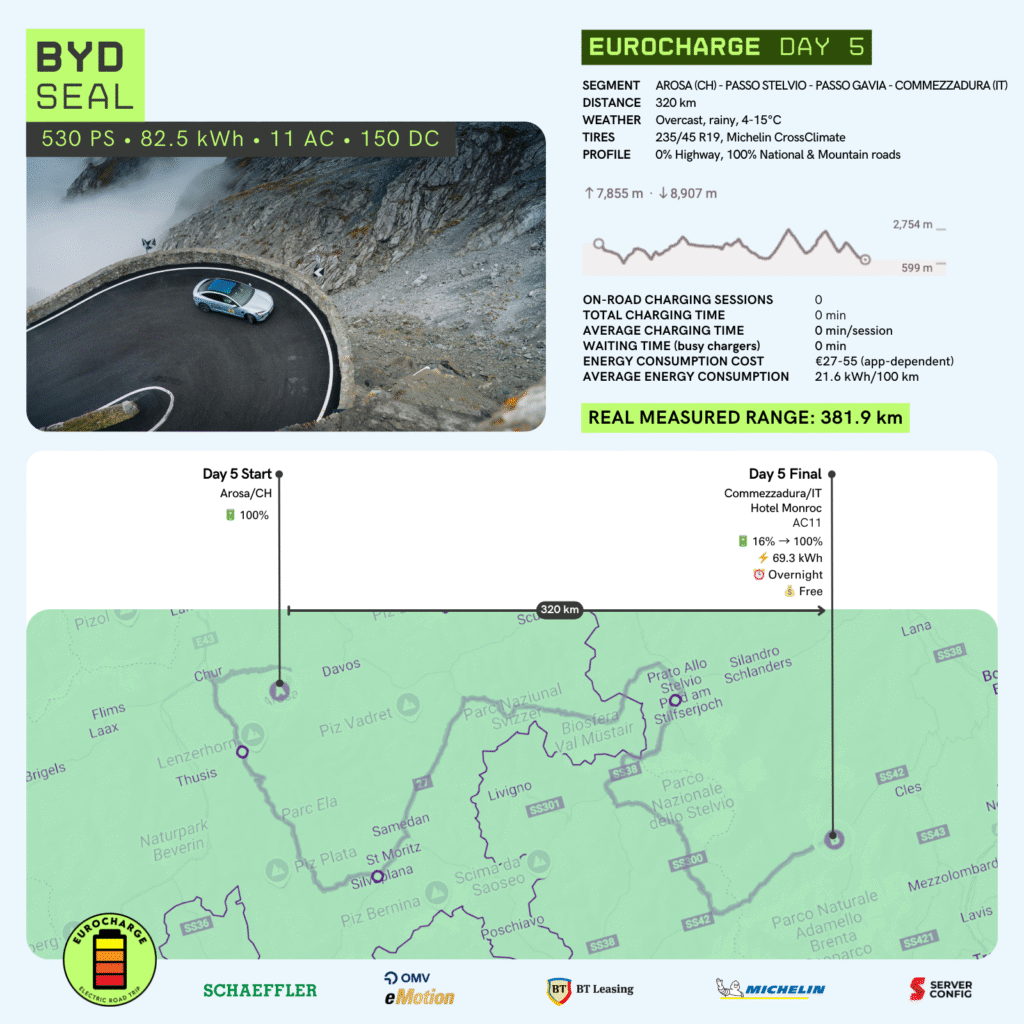
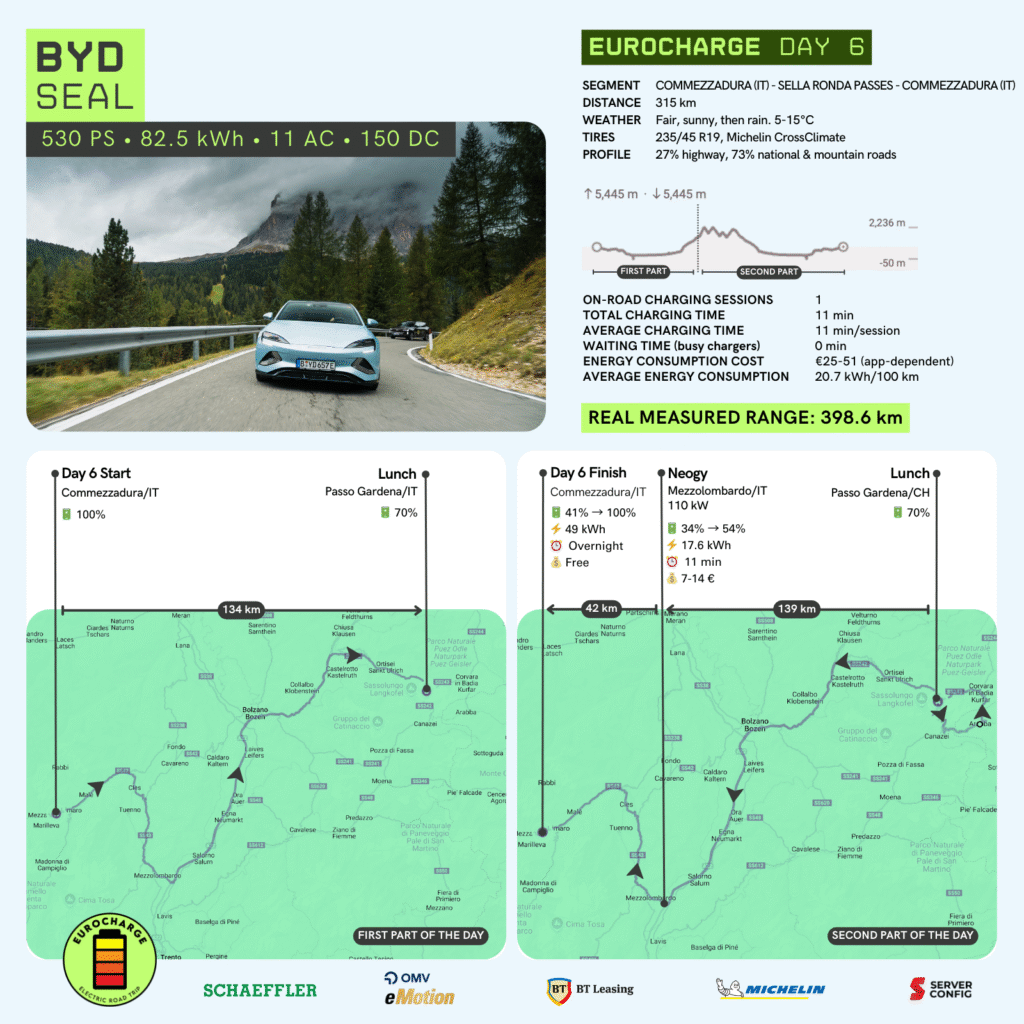
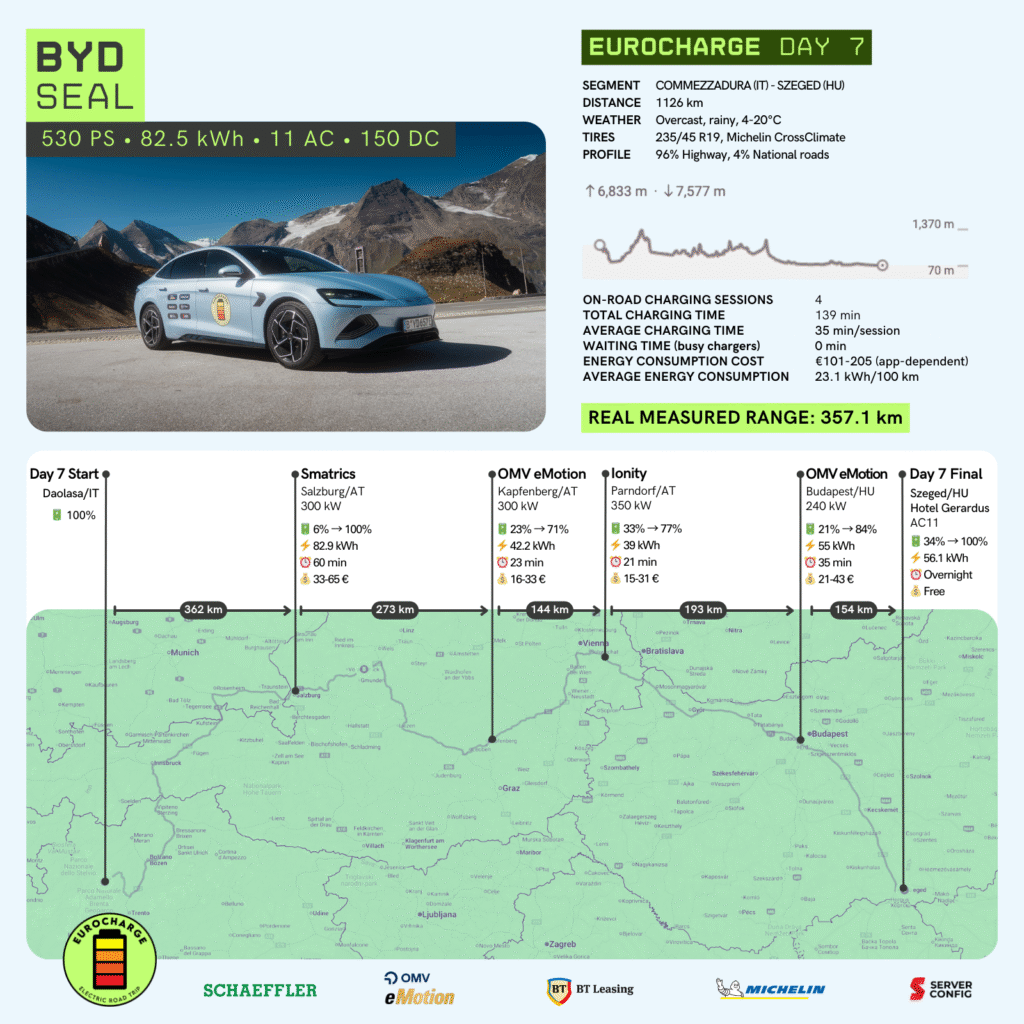
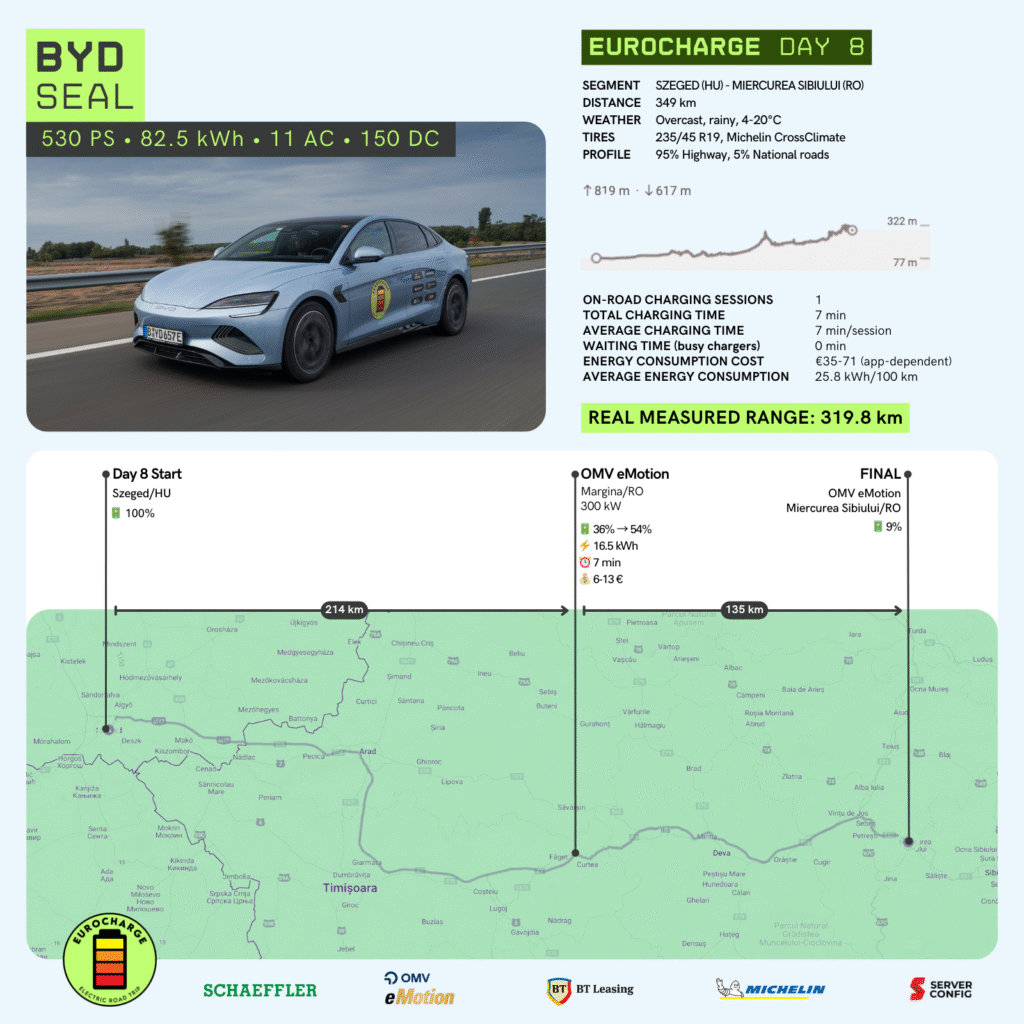
BYD Seal by the numbers:
- Total distance traveled: 4515 km
- Total charging stops: 13 sessions on the road + 7 overnight charges
- Total time spent while charging on the road: 7 hours and 17 minutes (437 minutes)
- Total energy charged: 973.5 kWh, of which 356 kWh in hotels
- Total cost of charges (hotel charges were free): between €240.6 and €487.4 (depending on the app used)
- Fuel cost comparison (estimated per route):
- A gasoline car of similar power (average fuel consumption est. 12 L/100 km, average price €1.80/L) would have genereted costs of around €975.
- An equivalent diesel variant (average fuel consumption est. 9 L/100 km, average price €1.75/L) would have generated costs of around €711.
- Weighted average of the energy consumption over the whole route: 22.1 kWh/100 km
- Weighted real average range: 374.9 km
Important mention about driving style: Throughout the entire test, the car was driven in “Normal” mode, never “Eco”. It drove steadily, within the speed limits, with an approach as close as possible to the legal speed limit on each road segment.
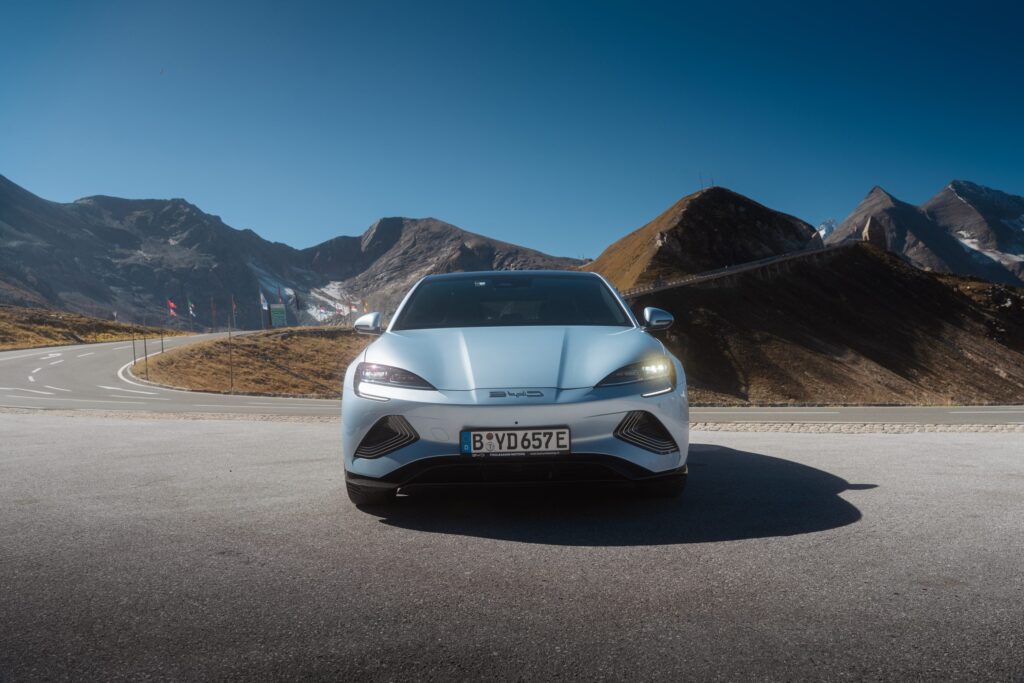
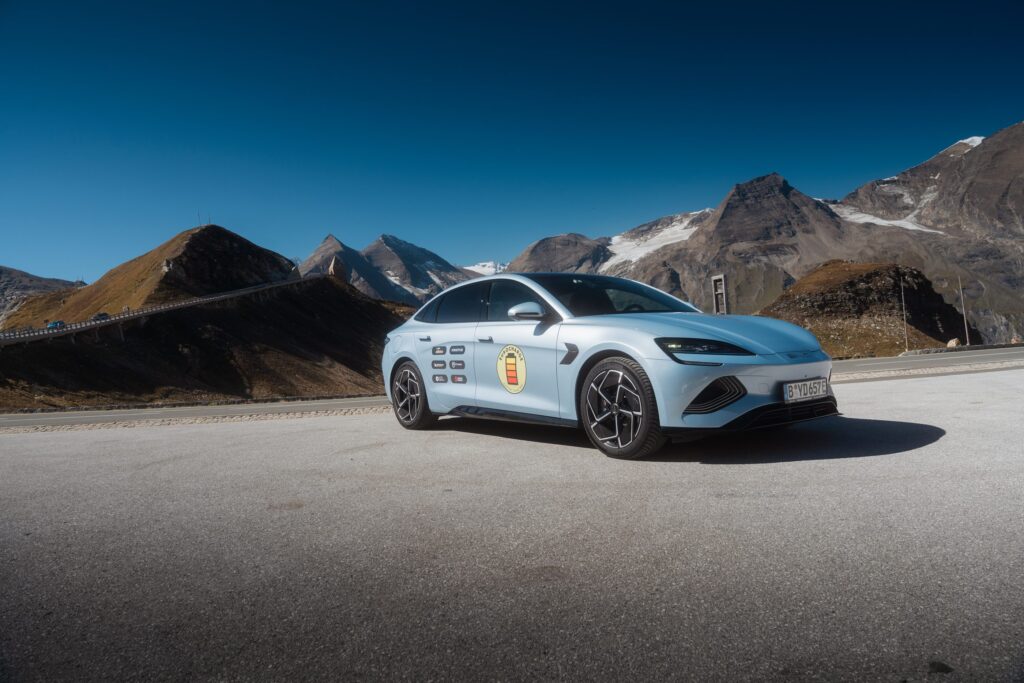
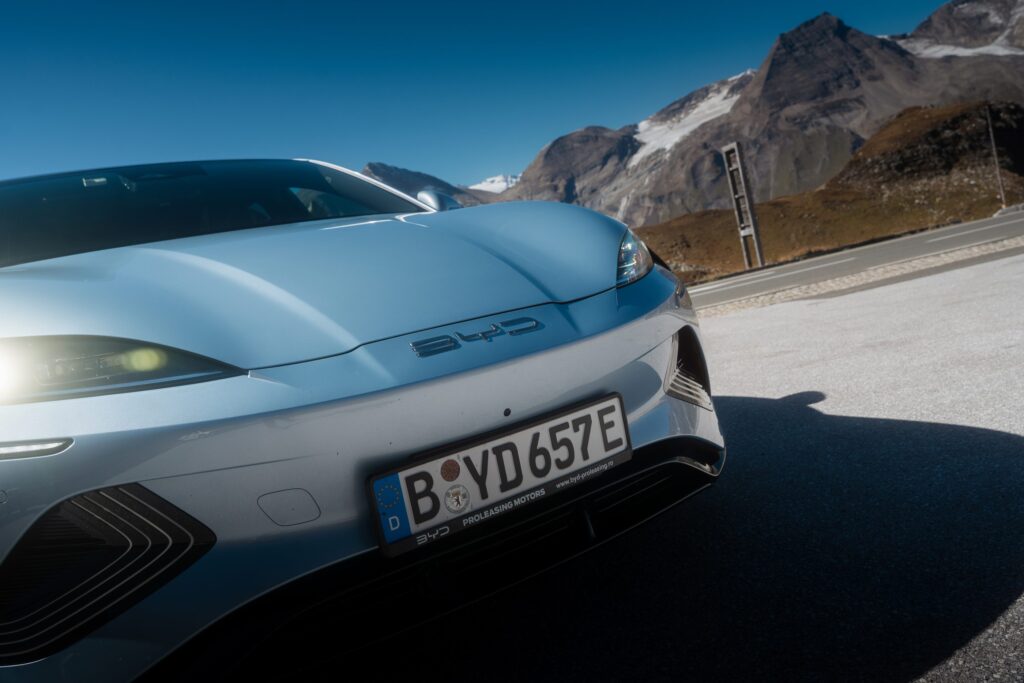
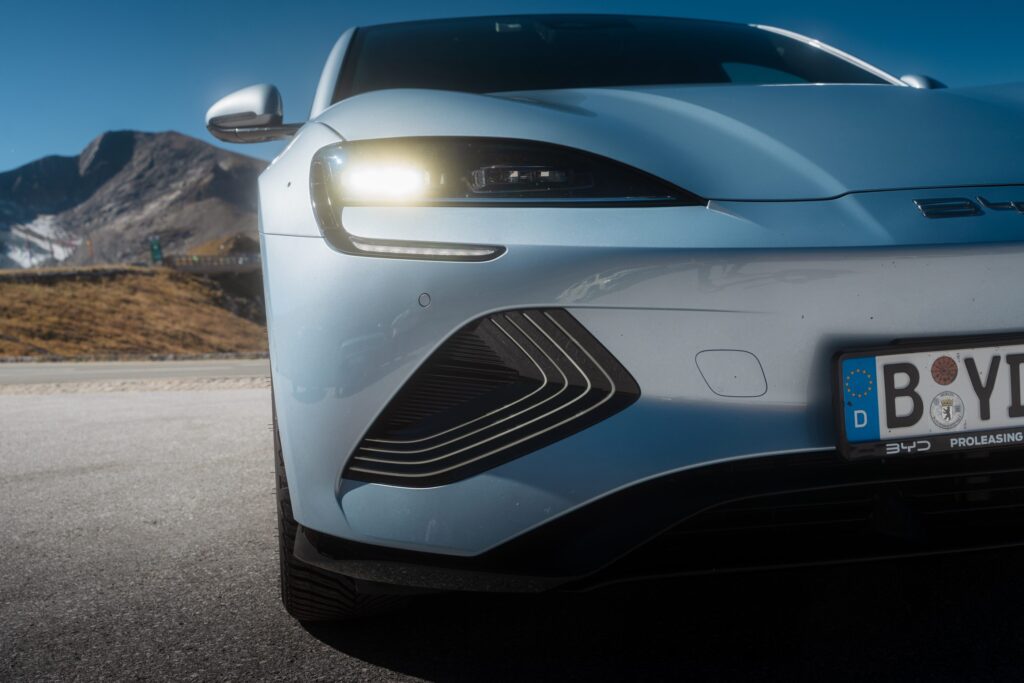
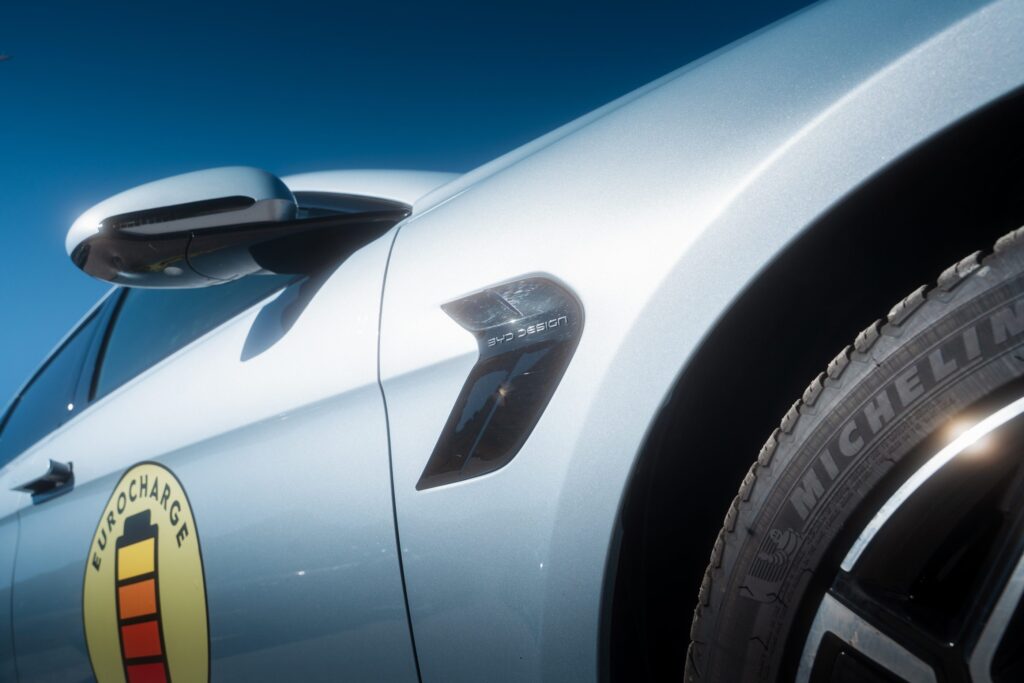
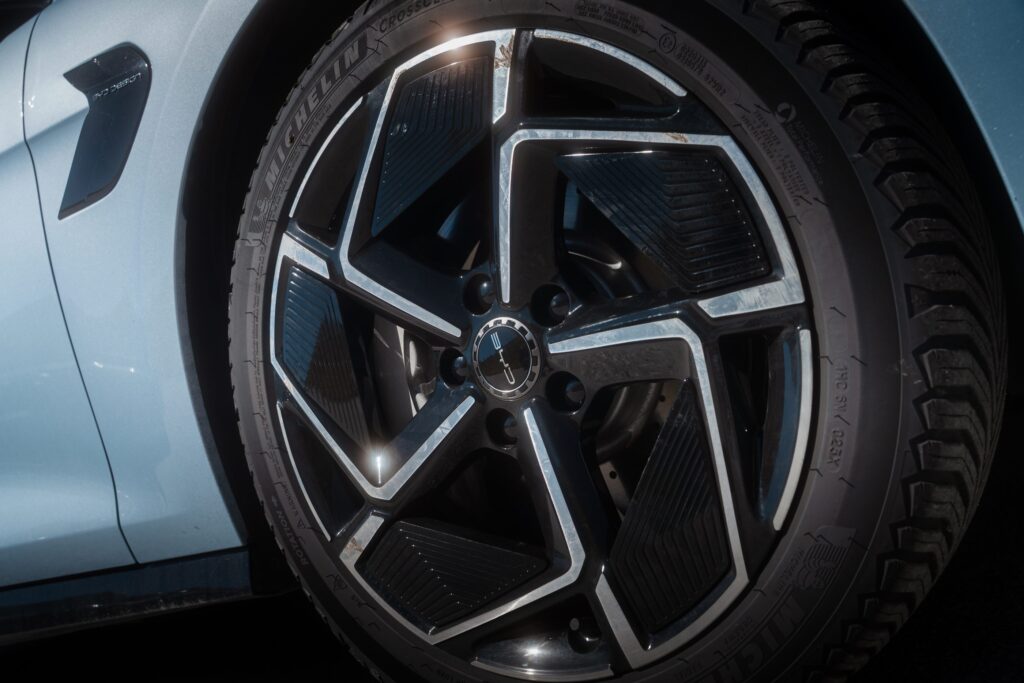
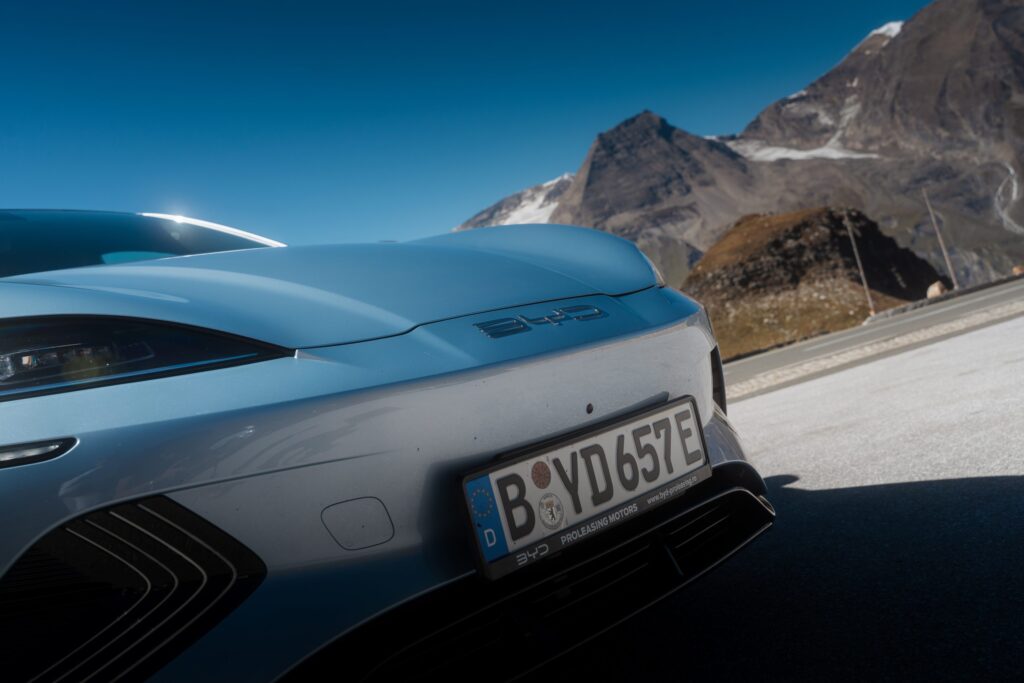
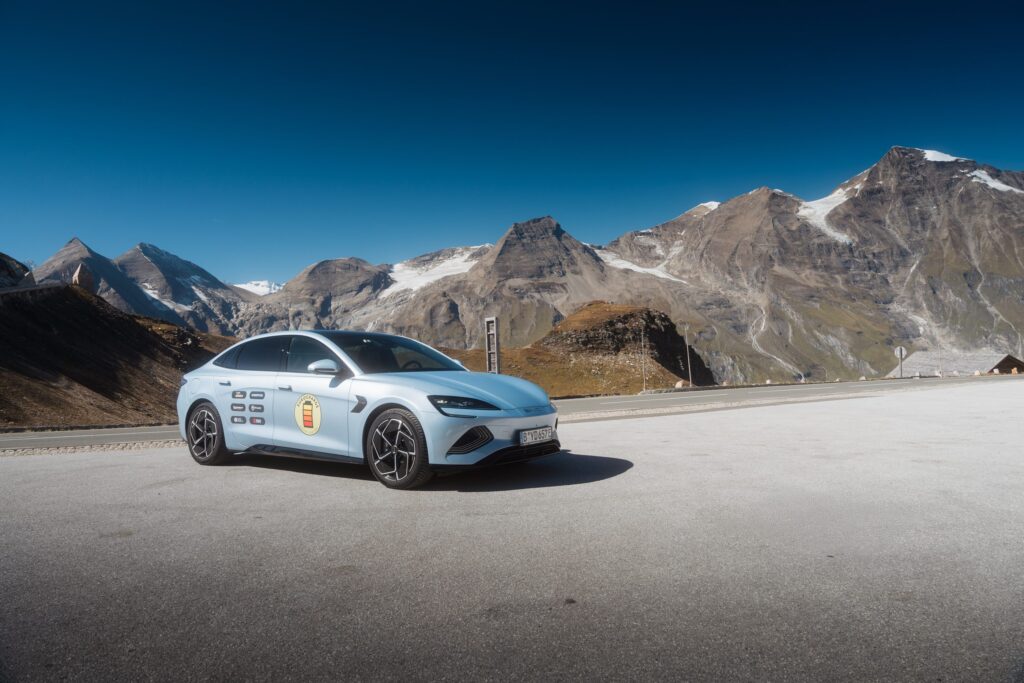
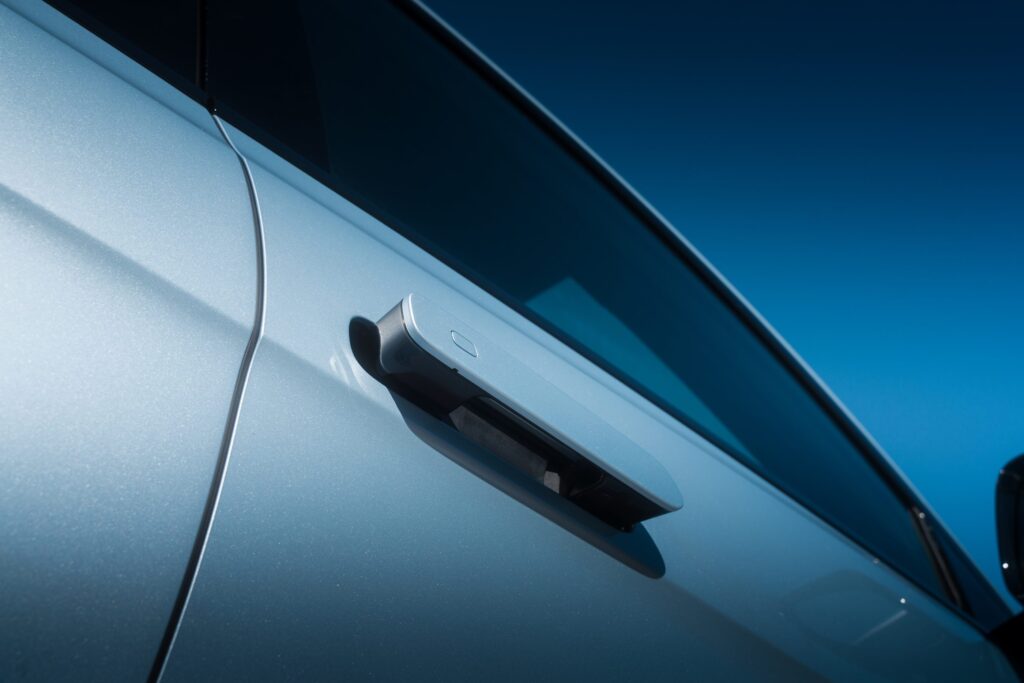
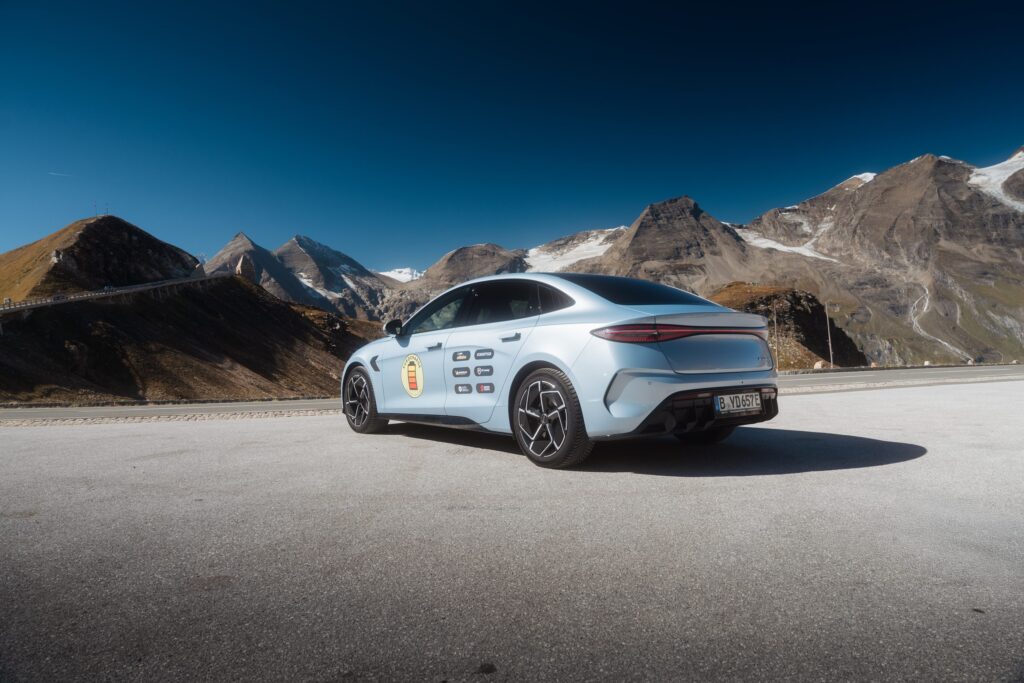
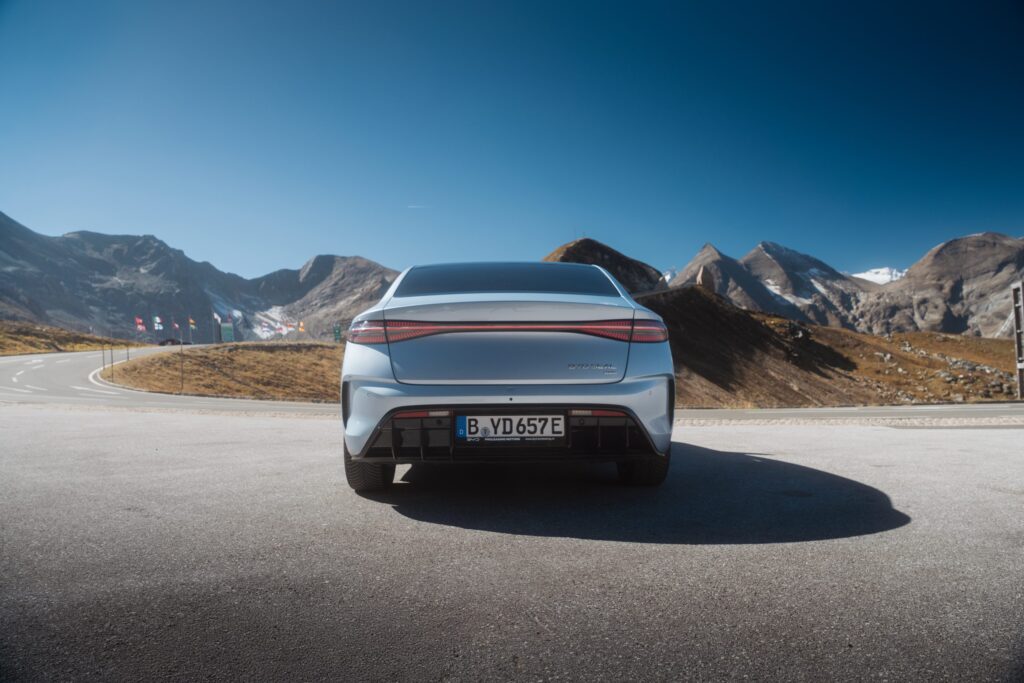
Conclusions and observations
- Dynamic revelation, not so much for charging capacity: Although it was the tour’s revelation in terms of dynamics, road balance, interior quality, and overall package, the BYD Seal was penalized by its charging speed. It spent the most time at charging stations among the sedans in the tour (437 minutes), a tradeoff for its competitive price.
- Good efficiency, but not stellar: With a weighted average fuel consumption of 22.1 kWh/100 km, the Seal is in the middle of the pack. It showed, like the rest of the cars, much better efficiency on alpine passes (consumptions of 19.0-19.2 kWh/100 km) than on the highway (where it climbed to 23-25 kWh/100 km).
- Solid long-run partner: Even at a slower charging speed, it proved itself a reliable long-distance companion, managing to complete the day’s climb up the Stelvio Pass (320km) without a single charging stop.
- Actual range: An average real-life range of 375 km is an honest and predictable figure, giving confidence in the car’s estimates. The 430 km peak real range obtained in the Swiss Alps once again shows the benefit of braking energy recovery systems on mountain roads.
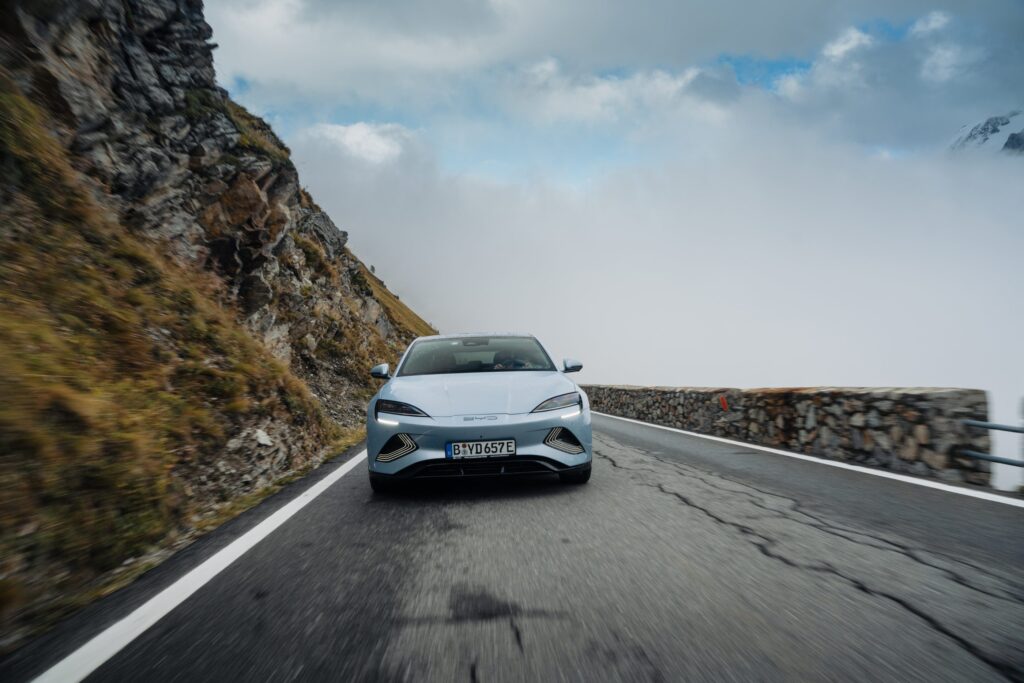
Impressions of those who drove the BYD Seal in EUROCHARGE by Schaeffler
Radu Hângănuț (Euronews Romania)
Usually, when you read about the concepts that drive automotive engineers in their quests translated into new models from God knows what brand, you hear about abstract philosophies. Once you meet this car up close, you usually can’t find the said philosophy and, in some cases, not even the tiny space you need to reach to turn on the headlights.
But in BYD’s Seal, I saw it. The philosophy. It’s called “Ocean Aesthetics” and I discovered it before I knew about it, when I was washing the car. The water flows in a remarkable way down the front of the car, and I think that’s wonderful. That a man actually designed the bodywork of this car with the sea in mind, and with the hope that someone might see the ocean waves as they try to get the last traces of pink whipped cream off the bonnet – that alone is something worth drawing as a specialist and experiencing as a driver.
But the BYD Seal has many other positives. The interior is very friendly. It fiddles if you want it to, but gets the job done when you need it to. The center screen rotates from landscape to portrait mode, for example. It’s a nice little thing, not necessarily helpful, but it steals your eyes and offers a conversation starter in case you don’t have anything to talk about with the passenger. It also comes with mats that can be adapted to the season in a very analogue way: you have the standard, plastic ones for wet seasons, while in summer you simply drag a piece of fabric over them. And then you repeat the process.
Seal takes the best of what you see from the competition and eventually composes a package that catches your eye at first, and then persuades you on the logic component. If you want sports-car performance, you get it. Just think of what the “3.8S” on the trunk lid might spell, to get a better understanding.
Also in the “what’s inside” department, we also noted the Dynaudio Performance, 12-speaker audio system that takes Nipsey Hussle’s music to a new level of godliness. Less good parts? Interaction with the multimedia system via voice commands is a bit shaky and frustrating at times. Also, the lack of a one-pedal-drive feature may be something you’ll wonder about when you’ve got a lot of trips around town.
On the plus side, the Seal has the most horsepower (530) of our caravan. Take that information and keep it close by for when you have to justify energy consumption. We got almost 23 kWh/100 km, with the caveat that we drove it on a 700+ km segment, made of almost 80% highways. So come back here in 11 days, when we have all the figures. Not all the judges have ruled.
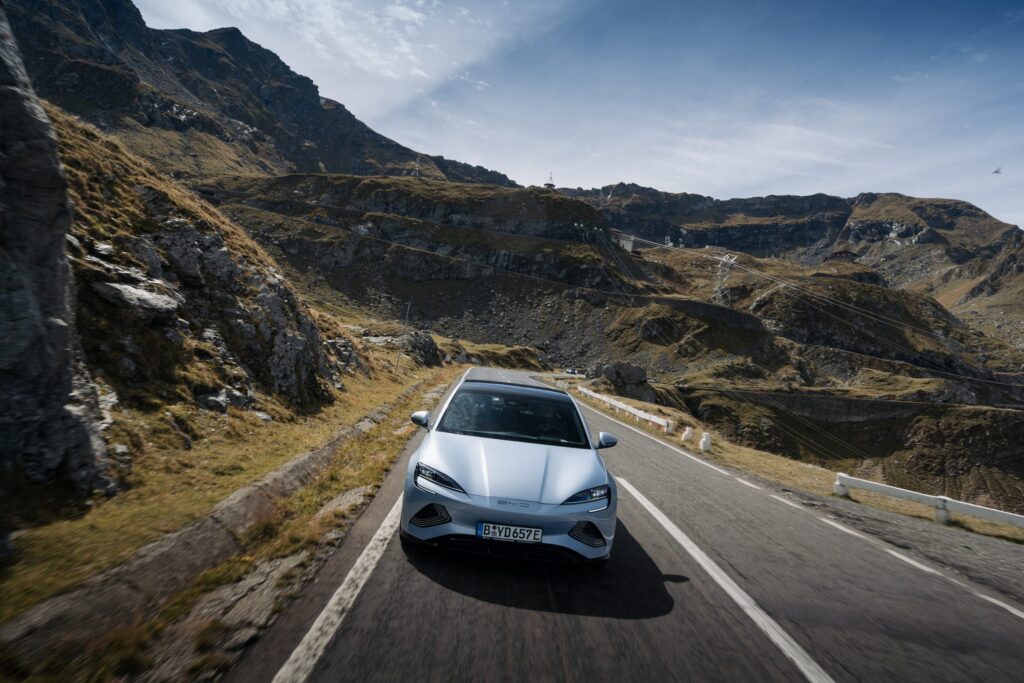
Adrian Mitrea (0-100.ro)
BYD Seal is the third model of the ambitious Chinese brand that I drive, after Sealion and Dolphin Surf. And the Seal reconfirms my first impressions of BYD: solidly built, mechanically robust, well put together. And the BYD Seal was a pleasure to drive. More than other BYD models. The prerequisite for me to enjoy driving it was to disable most of the safety systems – their calibration has room for improvement as far as I’m concerned
Also, the level of attention to detail or material combinations left me wanting for more and lead me to believe that this is not the car that BYD will conquer Europe with – if it ever does.
In other words, the BYD Seal’s strong point is that it drives well, much like a Tesla Model 3. Mechanically, it’s just right.
Over the course of the day, it averaged 20.9 kWh/100 km, which corresponds to a real range of about 400 km in highway conditions. Which is not bad, but not good either.
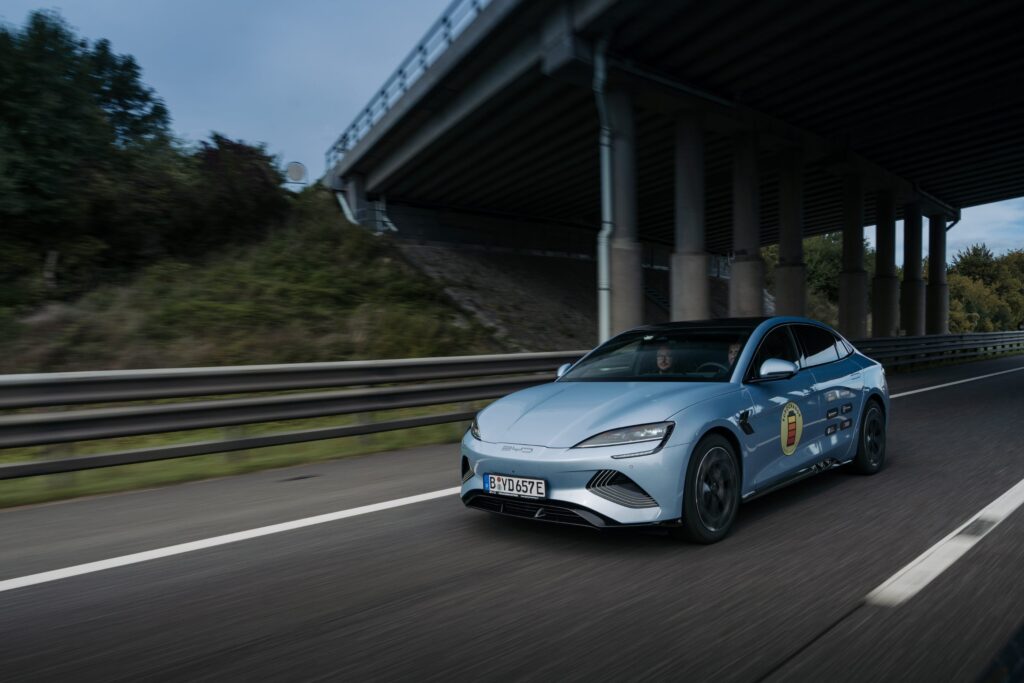
Mircea Mester (Autocritica)
When I picked up the keys, there was no expectation. Zero. Maybe a little curiosity for the 530 hp on the spec sheet, about as much as you’d have for a movie you haven’t seen the trailer. I figured I’d let it run, see what it’s all about.
After 400 kilometers behind the wheel, I can say this: the BYD Seal is, to me, the revelation of the EUROCHARGE tour. And that’s not because when you have no expectations, things tend to be good. But because the car runs so well, that there are extremely few things to criticize.
For example, it feels balanced on the road. It’s heavy, but not like a burden, more in the sense of a product that feels like quality, without question. It feels like an expensive product, well put together.
Inside, the Chinese have done a job that, I regret to say, some posh European manufacturers are still learning. It’s got Alcantara on the doors and dashboard and leather that feels great (probably artificial, but who cares, that’s the new standard).
And then there’s that huge screen, which swivels in portrait mode if you like. On it, I saw the most generous and well-integrated Apple CarPlay setup so far. Others are struggling to integrate the whole Apple ecosystem into their displays, here you have all the apps on the display right out of the box, not 10 pages to flip through until you hit Waze (I know you can customize positions from your phone, but when you get in a new car, everything resets).
Throw in a few other finer details that others haven’t even thought of – for example, automatically reducing the fan speed when you’re on the phone so you don’t hear the other person as if you’re in a cave – and you’ve got a high-tech package. The two wireless phone charging pads on the console work instantly, quickly and flawlessly, and the Dynaudio sound system is absolutely excellent. There was good music on Grossglockner Hochalpenstrasse today.
Obviously, not everything is perfect. The trip computer is a conundrum on the energy consumption side. It shows you the total consumption since the car first hit the asphalt, or the last 50 kilometers. And that’s it. Do you want to see how much you’ve used since you started the current trip? Uh, good luck. Those gorgeous screens get a bit dodgy in bright sunlight, you kind of struggle to see the figures like a grandpa without glasses even at maximum brightness. And the 150 kW charging power is decent. It didn’t bother me, but with how good the car is otherwise, you’d want at least 200 kW.
After going up and down the monster called the Grossglockner and another 100 km or so, the lifetime consumption of the car (which has almost 8,000 km on the odometer) dropped from 20.0 to 19.9 kWh/100 km. And after exactly 200 kilometers of running, I had 50% battery left.
The feeling I’m left with after today is that the BYD Seal is a very, very serious car. If you manage to get past the “made in China” mental straps, you might be in for a huge surprise. Especially if you’ve owned a Tesla before. Because frankly, Seal pretty much takes everything Tesla does and does it better.
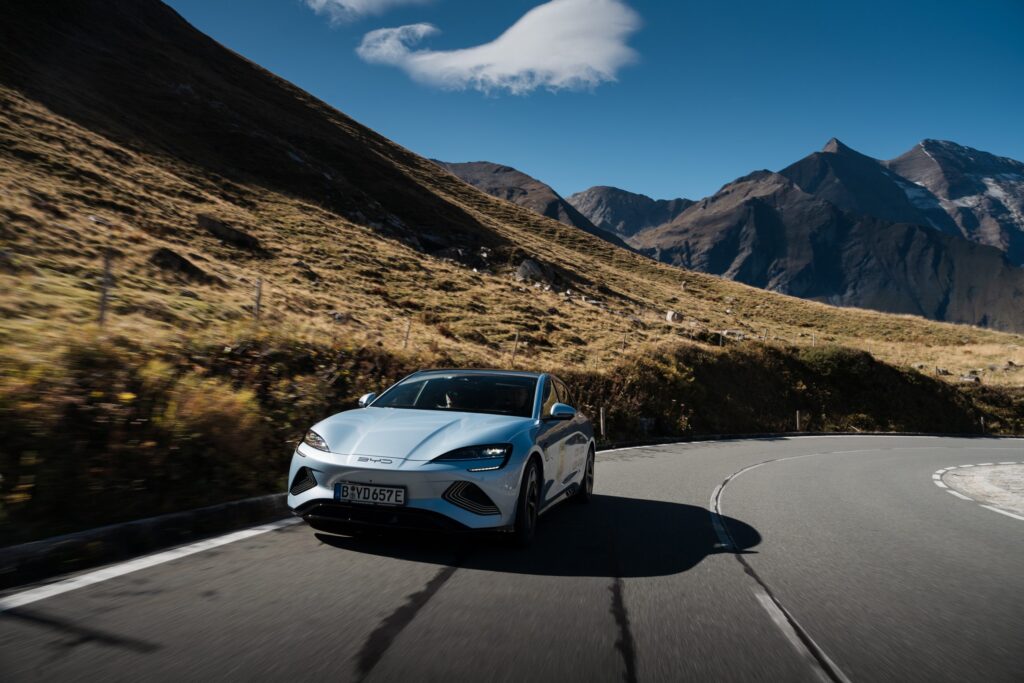
Constantin Ciobanu (Autocritica, Adevărul Auto)
What I can say with certainty is that the marine theme BYD uses to describe the design is justified as far as I’m concerned. I feel like I’m looking at a machine from Aquaman. But I really like the interior, its fluidity, its aesthetic homogeneity. And it’s all accompanied by very good quality materials and assembly. The Seal scores excellent points for perceived quality, a detail that can be factored into the purchase decision when you have similar models in your sights in terms of price and performance.
Two things surprised me greatly. The first is the maturity of not trying to reinvent the wheel. You have a start/stop button that allows you to leave the car on if you have to get out of the driver’s seat, which is synonymous with leaving the air conditioning on (for example) if it’s hot outside and you still have passengers in the car. This kind of banality is rare on some brands.
Then the chassis calibration, the way the power is delivered, the intuitive steering, the pleasant brake pedal dosage, pretty much all the details that identify with operating an automobile. Extremely mature the whole package, and it gives you satisfaction both on a long drive on the highway, but also on a magnificent mountain road.
There are a few small details, especially in the infotainment system and the way some of the assistance systems react that deserve a little more attention. It would help the car get even better, because from a certain level, that fine attention to detail makes all the difference.
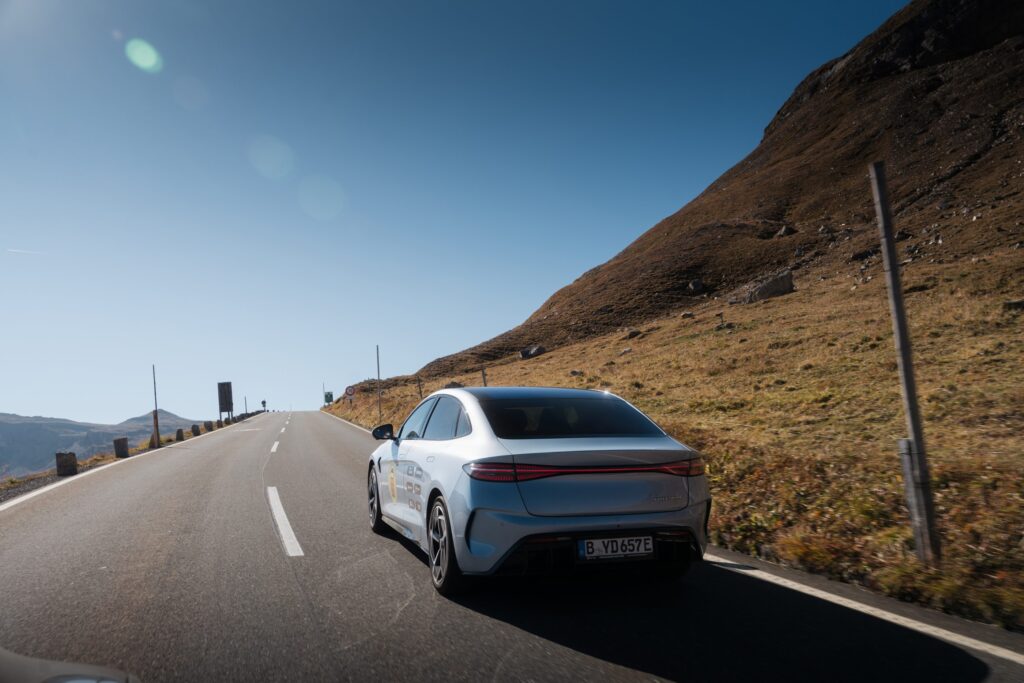
Radu Gurămultă (Autocritica)
This Build Your Dreams motto seems to have been taken as seriously as possible with the Seal. First of all, I really appreciate that there is an interesting sedan on the market; I’m one of those people who want to breathe beyond the SUV/crossover fever.
Then, I sat for a couple hours while driving and thought about the shortcomings of this model; and I say it as honestly as I can that I didn’t come across anything that flagrantly bothered me. That’s not to say that automatically if you got a BYD Seal everything would be flawless, it’s just that I didn’t discover its Achilles tendon. My first impression after a good few hundred miles of interaction is that the Seal presents itself as a mature, well-put-together model with plausible reasons to issue some claims in the car market.
If I have praised the bodywork version, I will be more reserved in my expression about the design. Somehow, I don’t see it as a beauty to be refined over time, but this aspect has a strong dose of subjectivity. Instead, I quickly fell quickly into the interior’s traps. An ergonomics that seems to have been learned from German professors, and the selection of materials and textures is also a big thumbs down, totally surprising for those who are currently afraid to taste the truffles that the Chinese industry is putting on the table. From this point of view, the Tesla Model 3 might have something to worry about. Especially since the interaction with the digital side of the Model Seal’s spirit is also friendly, quick to learn.
The range, a topic of interest, is fair for the technical proposal BYD is making, and the purchase price (€42,700 for the base version, €50,900 for the top version, tested by us in EUROCHARGE) is a fair reflection of current market realities. Now I’m not saying that the Seal is cheap, but that it becomes very interesting when you pragmatically debate competing offers. Shoulder to shoulder honestly, that is.
However, I would also have the necessary objection that I don’t want to make a statue of it. I’ve looked a couple of times for the promised 530 hp of maximum power and they’re nowhere to be found. Or, in fact, they’re not as impressive as they once were. That was a figure that used to make many sports cars shudder. Anyway, the dynamic resources are plenty, but not scary, to say the least. Still, for pumped egos, the Seal proudly wears its dry 0-60mph sprint time on its trunk lid: 3.8. Three point eight seconds, that is.
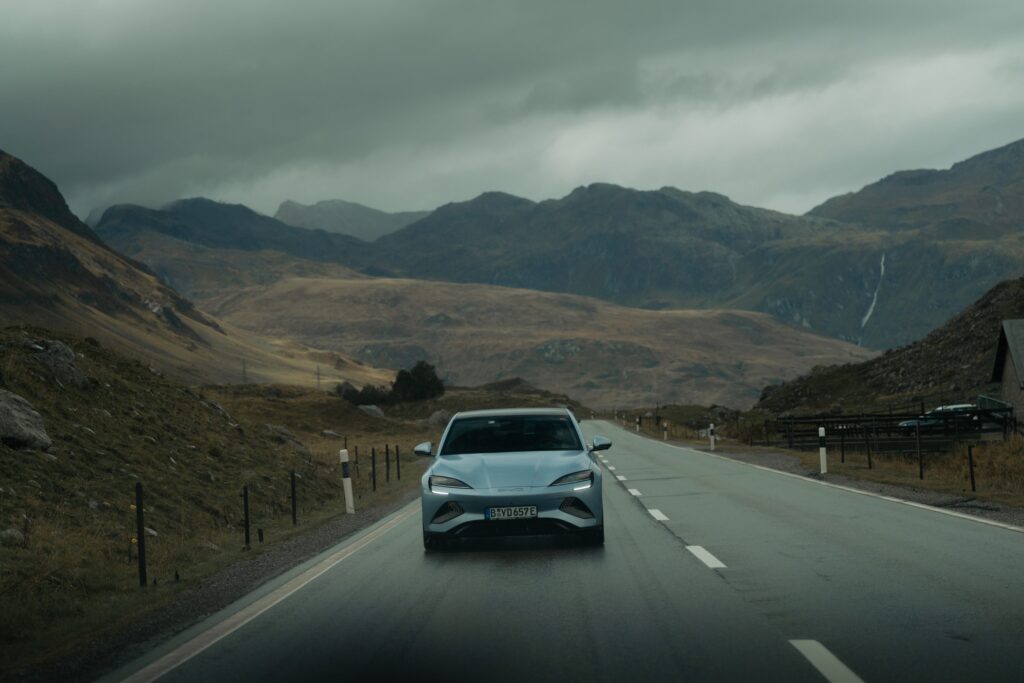
Dan Scarlat (TopGear Romania)
Although we have a Porsche with us, the best performing car on the tour is the BYD Seal we drove today. What’s more, it’s a car with an excellent power-to-price ratio – virtually every available horsepower costs less than €100, when other models are generally double the price. Ok, it’s not a common feature that potential customers take into account, but it’s good to know from the outset where this model stands and what it’s aiming for.
The chassis manages to keep all that power in check quite well, as long as you remember that the Seal is a heavy car, especially because of the big battery. The suspension is stiff rather than comfortable, designed to safely handle its nearly 2.2 tons of mass, but the car is very well buttoned up and anti-fun. Personally, I would have liked better seats, with a longer recline, but especially more lateral support. The interior has good materials for its price segment and the “digitization” is not total, with Seal also providing the driver with a multi-control zone with traditional buttons at the base of the center console. The center screen can be rotated at the touch of a button, but in portrait mode it doesn’t allow Android Auto or Apple CarPlay, so it’s a feature designed to impress friends rather than help the driver.
The Seal is a pretty classic sedan, with a very attractive silhouette, bold details, a plunging rear window and a short rear. A bigger trunk with better access would have been preferable though, possibly via a tailgate instead of the classic sedan lid. The car attracts a lot of eyes and looks desirable, but you have to be prepared to explain to curious onlookers in parking lots and gas stations what this new brand is all about and convince them that no, it’s not “a Tesla from China”, but a brand that is starting to play very seriously in the European market.
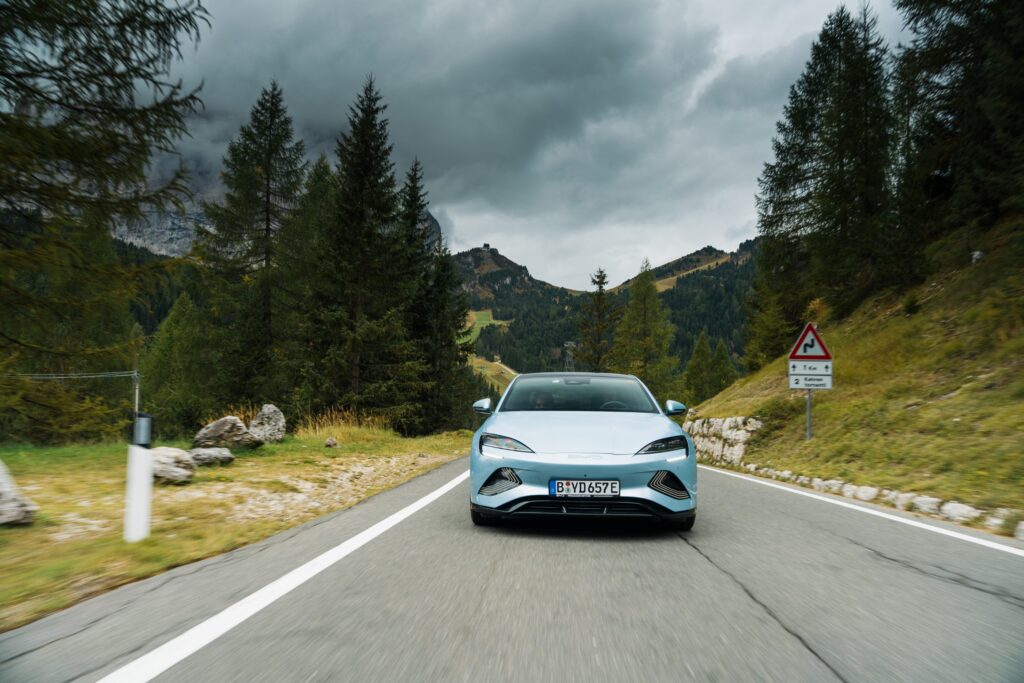
Tibi Buzdugan (Electromobilitate.com)
BYD Seal was for me the penultimate car driven in Eurocharge 2025. Eight days I felt like someone who had missed an episode of Game of Thrones and was trying to avoid spoilers from other colleagues as much as possible. I succeeded to some extent, as I didn’t know what to expect, but everyone was delighted and surprised.
After 300+ km through the Sella Ronda, highway and other winding roads from the hotel we started from to the valley’s thread, the Seal surprised me too. I’ll list just a few of the things that surprised me the most, not to praise every single feature. First, the sound deadening: even on the highway at 80mph, the car is very quiet inside. So you can enjoy the very good sound system without having to crank up the volume like at a concert. But if you still want to do that, you’ll be surprised at how little the sound is distorted, even at levels where your ears start to hurt.
Secondly, roadholding: the car has an almost 50/50 weight distribution between the two axles, as well as a torque control system they call ITAC (Intelligent Torque Adaptation Control). This makes the car very dynamic and allows you to delay braking a bit when entering corners. Even in the rain, downhill, I felt the car could hold the narrow lane perfectly in the hairpins without me having to downshift down to 20 km/h.
The only drawback I noticed is the low charging power. On paper, the car is capable of pulling up to 150 kW from the fast charging stations, but we didn’t manage more than 93 kW in the one charging session. It wasn’t perfect battery-temperature conditions, but other comparably priced machines perform much better (especially those on 800V platforms).
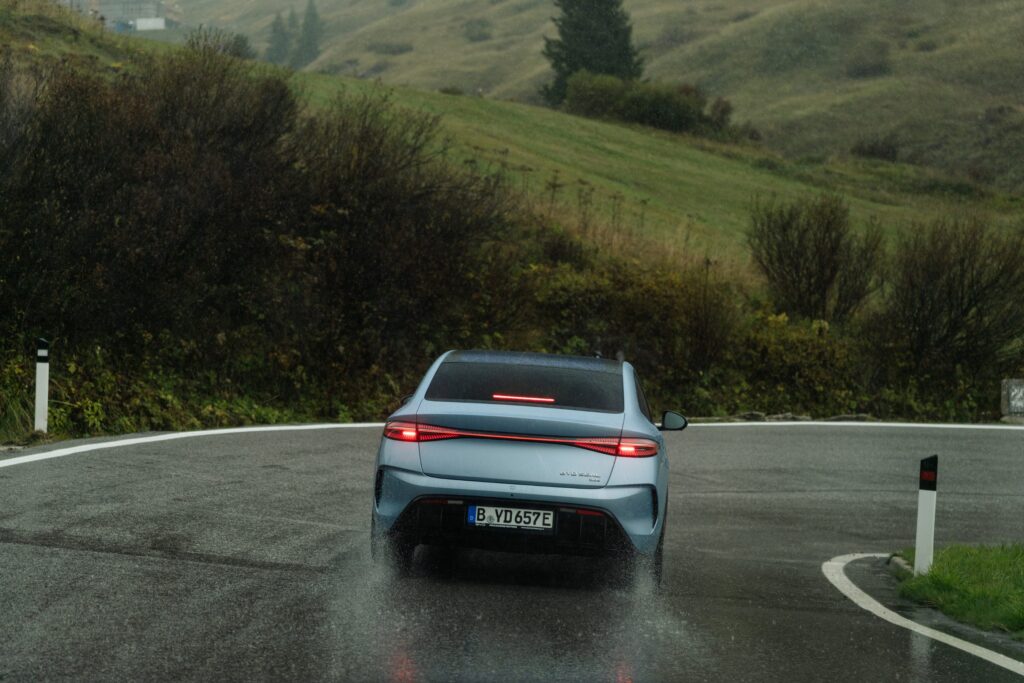
Andrei Nedelea (InsideEVs)
If you still had any doubt that Chinese cars are at least comparable to European ones, you have to try a BYD Seal. After driving it nearly 800 kilometers from Tyrol to Szeged, I really had time to form an opinion. BYD is playing hard with the Seal, which is a car with a sport sedan exterior design that doesn’t look out of place even after you show it a few corners followed by a straight line where you dramatically put down all the performance it has at its disposal.
The car looks good from any angle and even turns heads, but inside it doesn’t disappoint either. I was pleasantly surprised by the interior materials. I have toured with cars twice as expensive, whose perceived level of quality in places seems below Seal. Everywhere you touch inside, the materials are pleasant, look expensive and have a premium feel. You can even switch the screen between landscape and portrait, which is as unnecessary as it is spectacular, and is sure to impress your passengers.
I can’t fail to mention how fast Seal is. In 3.8S form, the Seal glues you to the seat with 530bhp and 680Nm which, as the name suggests, sends the car from a standstill to 60mph in 3.8 seconds. It feels even faster than that, especially when you’re a passenger. It also corners well, and traction control can be partially deactivated, allowing you to play with the power a bit and feel the car redistribute it from wheel to wheel in corners without ever losing grip.
I didn’t think it would impress me dynamically because I had read from others that it is a comfort-oriented car, but it really surprised me pleasantly. It also handles well on the highway, where although the suspension remains firm, the car manages to insulate passengers from imperfections in the road, and it’s very quiet thanks to the double-glazed front windows. The Seal is the car I drove the longest distance on the tour and after almost 1200 km behind the wheel and as a passenger, I find it a very attractive and convincing package that lends credibility to the BYD brand and puts established manufacturers in a not so good light.
